Embedded Systems Design (EGR 304, EGR 314)
A cornerstone of this course is the mid-semester design reviews that allow students to present their designs — such as wearable robots in the Spring 2022 semester — to various mentors who are industry members from Intel, Microchip, Texas Instruments, Fender and other major companies with operations in Arizona.
Spring 2024 projects
![sundt[1] sundt logo](https://poly.engineering.asu.edu/wp-content/uploads/sites/27/2024/04/sundt1.jpg)
A Fully Functional and Safe Device for Sundt
Students: Connor Bogenn, Harris Bokhari, Victor Chavez, Scott Hardman
Course: EGR 304 Embedded Systems Design I
The primary objective of this project is to design and manufacture a device for Sundt that not only meets all functional requirements but also prioritizes safety.
![sundt[1] sundt logo](https://poly.engineering.asu.edu/wp-content/uploads/sites/27/2024/04/sundt1.jpg)
Smart Site Guardian
Students: Gwen Egin, Mudit Lal, Skyler Riley
Course: EGR 304 Embedded Systems Design I
The smart helmet is engineered to revolutionize construction safety and efficiency. It ensures that every worker on-site is monitored and authorized, significantly reducing the risk of accidents and championing a culture of safety.
![sundt[1] sundt logo](https://poly.engineering.asu.edu/wp-content/uploads/sites/27/2024/04/sundt1.jpg)
Tough Watch XO – I
Students: Michael Plummer, Daniel Resnick
Course: EGR 304 Embedded Systems Design I
Keeping employees safe and well-equipped is a high priority for any construction company. This product will help the construction industry better connect with present-day technology in an effort to provide better customer service and safety for their workers, and it will be unique in its ability to be used over multiple interfaces and equipment.
![sundt[1] sundt logo](https://poly.engineering.asu.edu/wp-content/uploads/sites/27/2024/04/sundt1.jpg)
Adhesive Sensors
Students: Sean Michael Hall, Angelo Navoa, Kevin Ordorica, Kexu Pan, Marcus Perez
Course: EGR 304 Embedded Systems Design I
This project seeks to explore and develop cutting-edge adhesive sensor technologies to deliver enhanced user experiences, optimal fit, and customizable features for a range of applications.
![sundt[1] sundt logo](https://poly.engineering.asu.edu/wp-content/uploads/sites/27/2024/04/sundt1.jpg)
IoT-enabled Connected Tools
Students: Jakob Clark, Luke Jeffs, Derek Schow
Course: EGR 304 Embedded Systems Design I
This project aims to increase the efficiency and safety of employees of Sundt Construction through an integrated connected system involving electronics, sensors, and IoT technology.
![sundt[1] sundt logo](https://poly.engineering.asu.edu/wp-content/uploads/sites/27/2024/04/sundt1.jpg)
Tough Watch XO – II
Students: Sophie Bryant, Kai-Ra De La Fuente
Course: EGR 304 Embedded Systems Design I
Keeping employees safe and well-equipped is a high priority for any construction company. This product will help the construction industry better connect with present-day technology in an effort to provide better customer service and safety for their workers, and it will be unique in its ability to be used over multiple interfaces and equipment.

Absolute Zero
Students: Jillian Brooke, Alex Gutierrez, Raj Kodithyala, Briana Wells
Course: EGR 314 Embedded Systems Design II
This project aims to create a mobile weather station for users, focusing on humidity and temperature readings. Success criteria include incorporating a custom PIC, Wi-Fi communication and motor control. Employing creative brainstorming methods, the team ensures alignment with requirements while adding rover capabilities for enhanced learning in robotics, circuitry and coding.

Team 311: Weather Wizard
Students: Colin Fricke, Carrie Greeney, Todd Hayes, Saif Elsaady
Course: EGR 314 Embedded Systems Design II
This team aims to develop a portable weather station for processing and displaying real time environmental data.

Team 201: BevRight
Students: Erik Alegria, Hunter Janisch, Joseph Pelle, Houyu Zhang
Course: EGR 314 Embedded Systems Design II
This project’s challenge was to develop a device detecting beverage temperature and enabling user-selected adjustments. Utilizing a heating pad or fan, the device modifies the liquid’s temperature accordingly. The objective is to develop a fully operational prototype showcasing the semester’s learning outcomes.
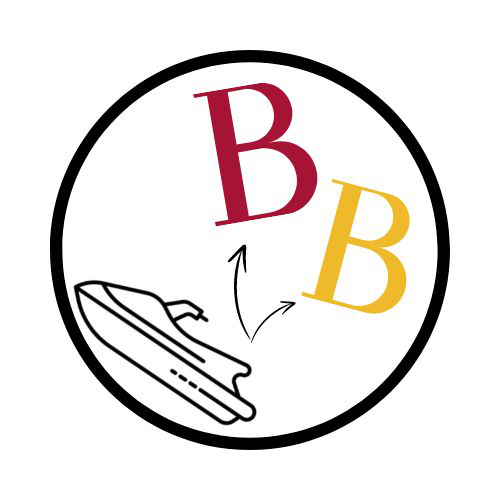
Ground Moving Weather Station (G.M.W.S)
Students: Abdirahman Aden, Chach Chaimongkol, Sean Vellequette
Course: EGR 314 Embedded Systems Design II
This team’s mission involves crafting a mobile product capable of detecting temperature and air pressure. Guided by class and ASU standards, they aim to develop an innovative, adaptive and durable solution to meet customer requirements in the market.

Who-Wa-Way Inc
Students: Ethan Conner, Lana Harkin, Lu Yan Tan, Maryam Younan
Course: EGR 314 Embedded Systems Design II
This project entails an RC weather station car equipped with temperature and humidity sensors alongside two distinct motors. Additionally, it will connect to WiFi via the ESP32, facilitating data storage in the cloud.
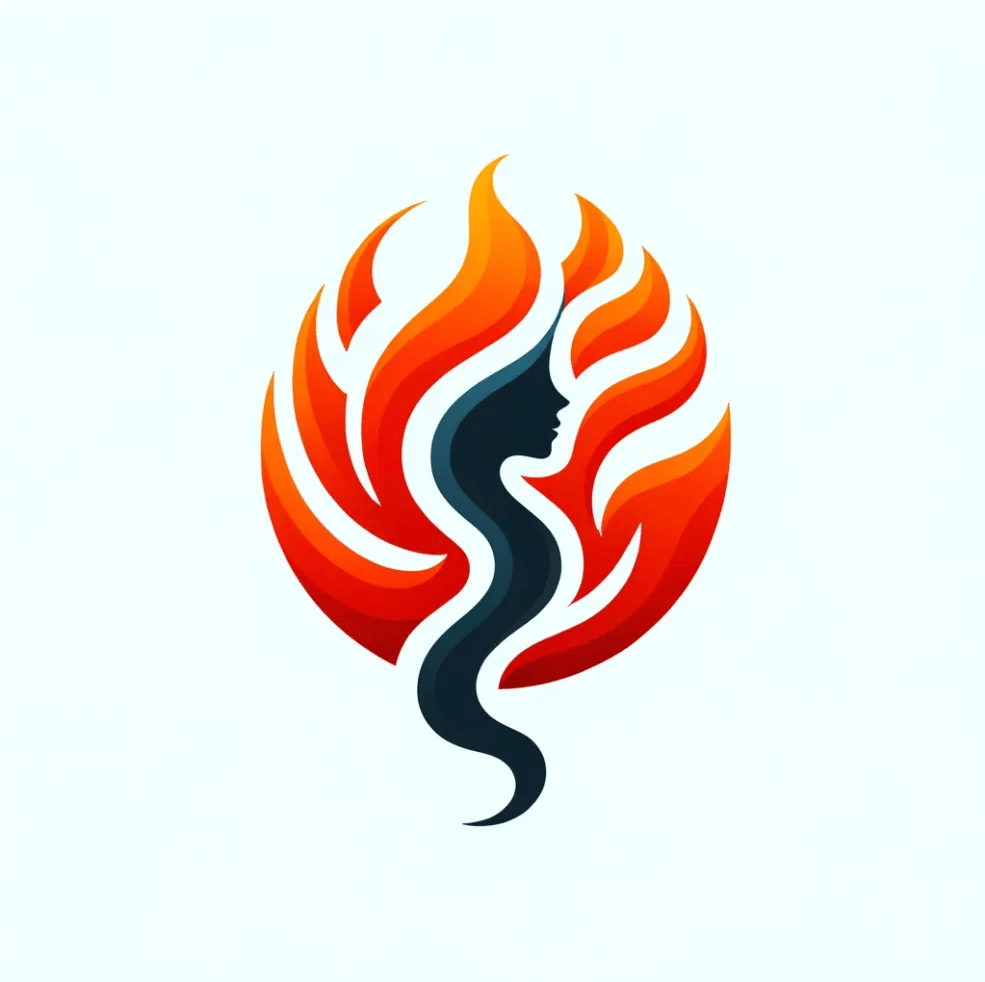
Team 203: S.I.R.E.N
Students: Kyle Chin, Abel Gurrola, Payton Schmidt, Ryan Tellez
Course: EGR 314 Embedded Systems Design II
This team has developed a portable campfire alarm designed to alert individuals when their campfire becomes uncontrollable.

Team 204: Solar Signal/Garden Weather Station
Students: Jacob Cousins, Jeremiah Herrera, Gavin Nielsen, Brennan Potter
Course: EGR 314 Embedded Systems Design II
This team’s objective is to develop a portable, user-friendly device capable of providing soil measurements like temperature and humidity when plugged into a garden. Additionally, the team incorporates a solar panel atop the device to sustainably power its onboard batteries for minimal maintenance.

Smart Breeze
Students: Bradley Baltazar, Edgar Lopez, Ean Potter, Dawson Rockers
Course: EGR 314 Embedded Systems Design II
This team engineered a portable weather station capable of detecting temperature and humidity, triggering a fan based on the received data.

Team 206
Students: Rishik Alturi, Damien D’Amato, JJ Sales
Course: EGR 314 Embedded Systems Design II
This project entails an installation of a beehive air conditioning system incorporating surface mount components.
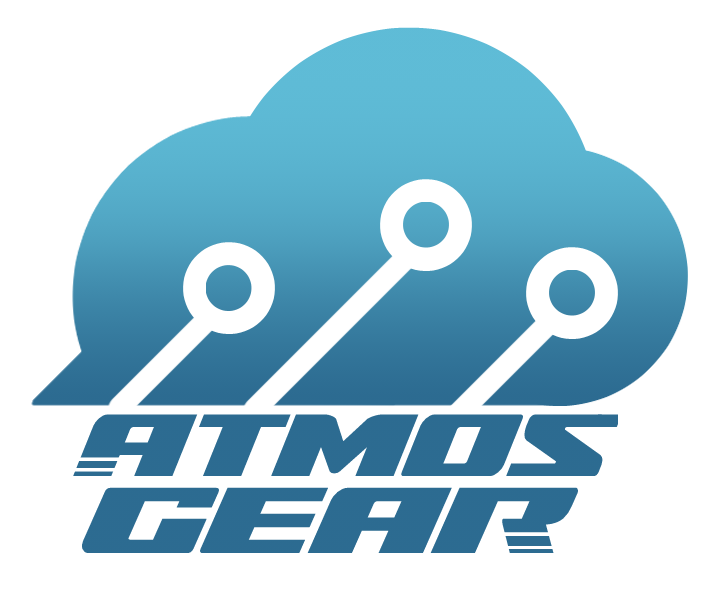
AtmosGear
Students: Manuel Garcia, Danial Haddad, Isaac Linares, Mickaela Werner
Course: EGR 314 Embedded Systems Design II
The objective of this project is to achieve full automation of the plant cultivation and growth process, minimizing human intervention.

Reg-Fan
Students: Joaquin Jimenez, Panagiotis Levendis, Abner Oaxaca, Enyinnaya Onyenso
Course: EGR 314 Embedded Systems Design II
The objective of this project is to manufacture a fan that regulates temperature and wind speed.

Team 301: Weather Pod
Students: Fynn Meyerhoff, Kevis Seymore, Xzekiel Trevino, Brian Wegner
Course: EGR 314 Embedded Systems Design II
The Portable Weather Pod features a simple and compact design, suitable for users on the move. Its all-weather pod design allows for use both at home and in austere field conditions. The pod offers hyper-localized weather conditions for users who require accurate weather data, whether it’s monitoring high heat conditions at a job site or ensuring a patio in a home is at the perfect temperature for the next backyard BBQ.

Team 302: U.C.C. (Uniform Climate Control)
Students: Justin Hanson, Jason Klinkbeil, Evan Lininger, Alijah Williams
Course: EGR 314 Embedded Systems Design II
The mission of this team is to design a reliable product that focuses on sustainability and longevity that is simple yet effective at monitoring, recording, and regulating temperature and humidity of a person’s surroundings.

Team 306: Power Plant
Students: Miguel Hernandez, Alex Leon, Alex Nguyen
Course: EGR 314 Embedded Systems Design II
This team will be creating a power plant that is able to have two sensors that let the user know the temperature of the soil and another sensor that will activate a LED to show that there is light being appropriately given to the plant.

Mobile Weather Monitoring Solutions / The Isopod
Students: Anthony Alvarado, Princess Colon, Cole Lackey, Bill Pena
Course: EGR 314 Embedded Systems Design II
This team was tasked with developing a mobile weather station that would be capable of measuring at least two different environmental variables, including but not limited to temperature, rainfall, humidity, atmospheric pressure and wind speed. In addition to monitoring the environment, the team utilized an actuator who’s movement would be based on data collected by the sensors.

Team 310: Flora Forecast
Students: Julia Providell-Appenfelder, Elliott Gillespie, Margaret Linde, Angie Valencia
Course: EGR 314 Embedded Systems Design II
The objective of this team is to create systems for a mobile weather station that can interact with the environment by sensing and acting in sequence. Additionally, environmental data online will be shared using WiFi, employing the MQTT protocol for broadcasting.

Team 308: Oasis
Students: Hengjui Chang, Shawn Dalzon Meris, Matthew Olpin, Gabriel Sandys
Course: EGR 314 Embedded Systems Design II
This project uses sensors in a system for a mobile weather station to detect different types of weather conditions and notify the user accordingly. The weather station should be able to track these conditions with a motor controller.
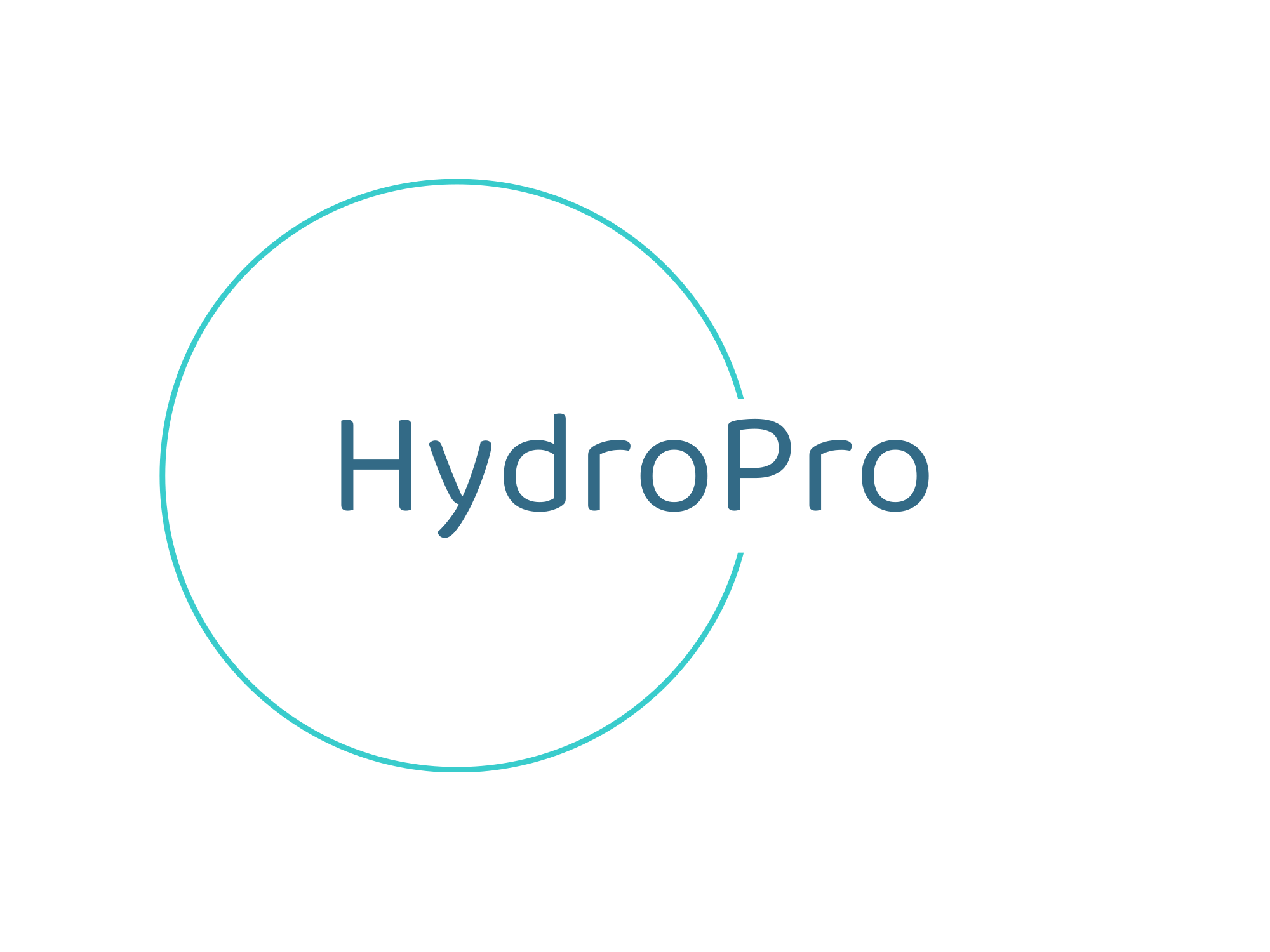
HydroPro
Students: Ruryck Adame Butanda, Jinuk Jeong, Andrew Kleshock
Course: EGR 314 Embedded Systems Design II
The demands for higher quality data and precision only continue to evolve. As a result, this team identified that applications of these increasingly improving technologies could be applied more toward indoor uses. This project follows such applications, specifically by inspirations from humidifiers. Ultimately, the device aims to maintain humidity and temperature based on sensor parameters that the user will be able to control via Wi-Fi.

Fire Sentry System
Students: Moksh Goel, Andrew Headley, Nathan Vairora, Ethan Young
Course: EGR 314 Embedded Systems Design II
This automated fire extinguisher operates by utilizing a light sensor and temperature detector to identify fires swiftly. Once a fire is detected, it activates a motor that moves the extinguisher into position and triggers its operation, quickly suppressing the flames and mitigating potential damage.

Team 312: Weather Toy Car
Student: Baowen Huang
Course: EGR 314 Embedded Systems Design II
This project investigates a wind speed embedded system. The objective of this project is to make a product that would detect the weather data like wind speed and be easy to assemble, even for children.
Spring 2023 projects
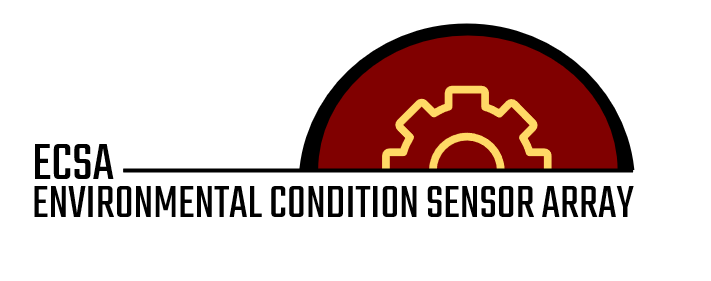
Team 201: Environmental Condition Sensor Array
Students: Aiden Lynch, Richard Kovalcik, Glen Stevens
This team designed a cohesive embedded system that monitors temperature and humidity levels to alert users about possible mold growth in their homes.

Team 202
Students: Miguel Chacon Cuesta, Carlos Chacon Cuesta, Wyatte Ricks
Bathrooms have high levels of humidity which can lead to a buildup of black mold. One of the main reasons for the buildup of mold is poor ventilation which results in a humid and moist environment. Bathroom ventilation fans are noisy and are commonly activated by a switch, which requires a user to manually turn it on or off. This leads to users neglecting to use the fans or forgetting to turn them off, causing excess energy wastage. To address this issue, this team is developing an automated switch device that can sit on top of an existing fan switch. This provides an easy-to-use fan timer, without needing to modify the house wiring or remove the switch, and enables further IoT integrations.
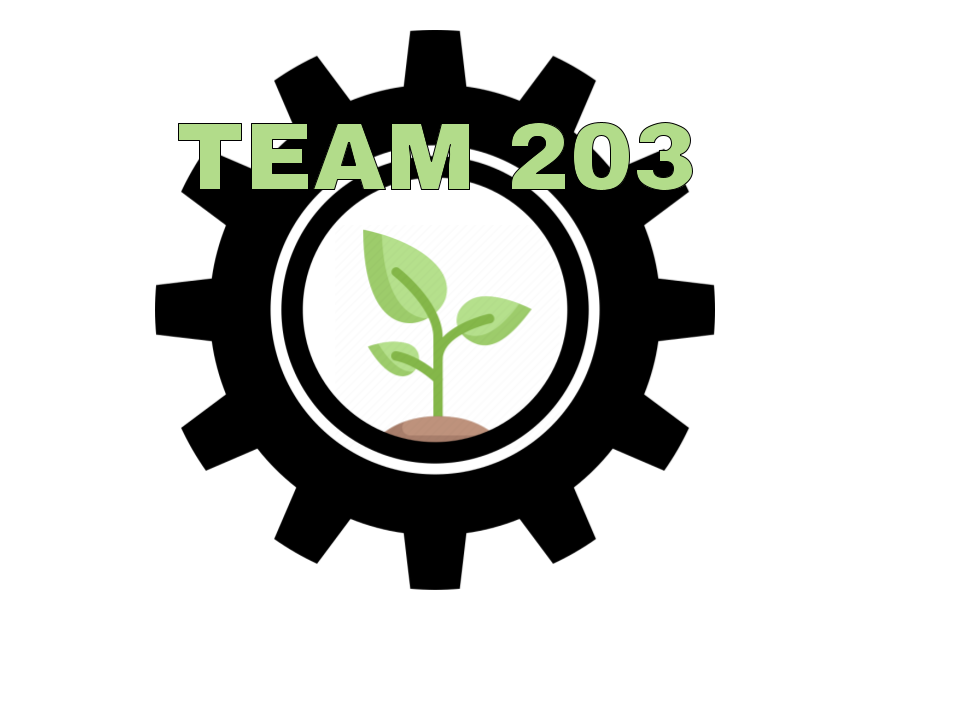
Team 203
Students: Madison Hedges, Zachary Felty, Hasan Kaysan, Morgan Strube
This project utilizes weather sensors to maintain plant life in an enclosed space. Within a box, different sensors work together to show the health of the plant environment to the user so that the plants have a greater chance of sprouting.
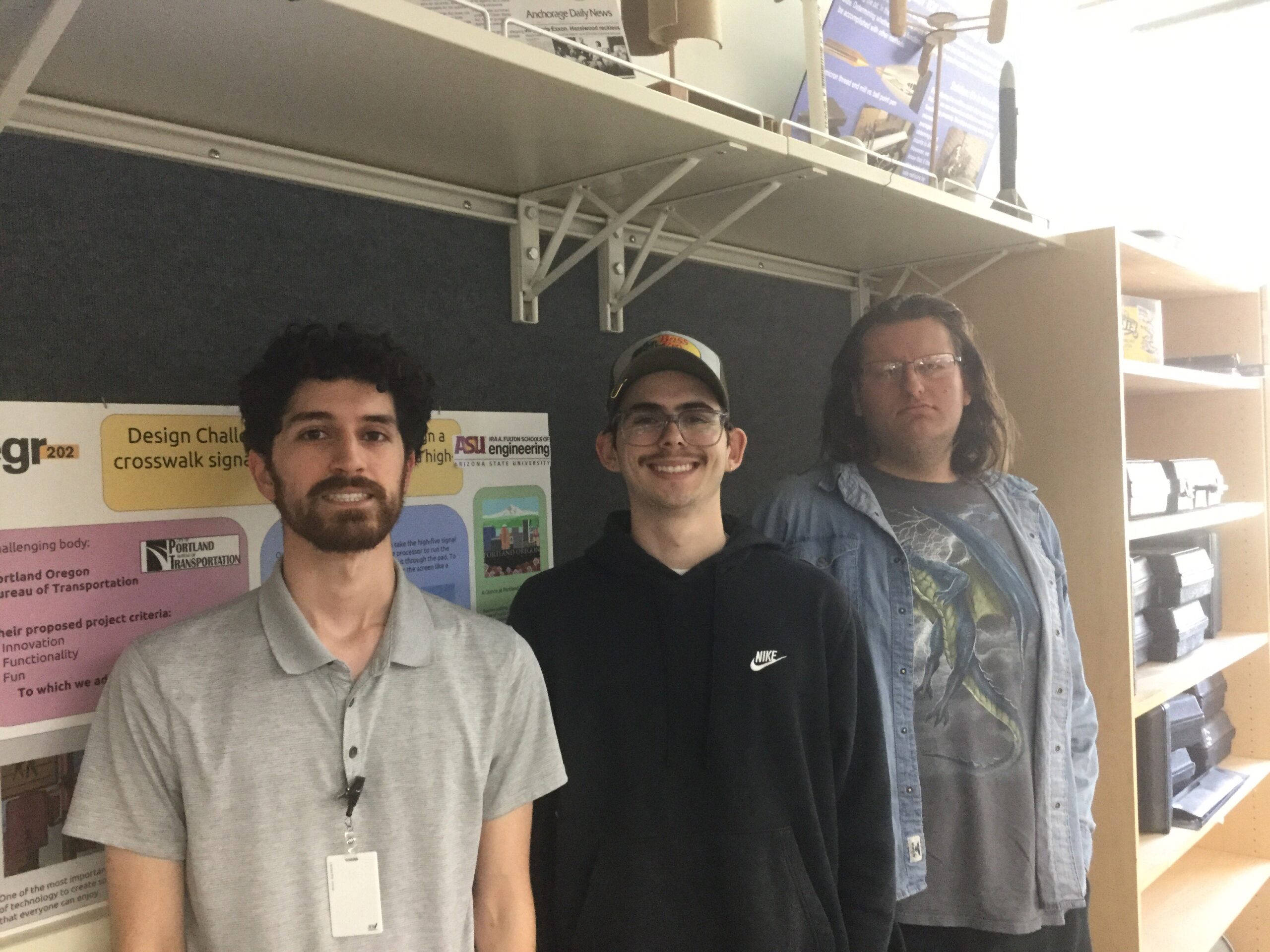
Team 204
Students: Nicholas Dunn, Eduardo Lopez, Richard Green
This team created a terrarium control system that has an embedded PCB with a two-way micro controller communication, moving motors and easily understandable temperature readings that will turn on a fan if the temperature passes a certain point.

Team 205: Missing Umbrella
Students: Deepit Arora, Michael Gross, Enoch Choi, Amy Joyce Valencia
This team’s mission is to design and develop an embedded system that incorporates environmental sensors, providing users with real-time data on temperature and wind speed. By leveraging affordability and small form-factor technologies, they strive to deliver a product that will benefit the user and exceed their expectations.
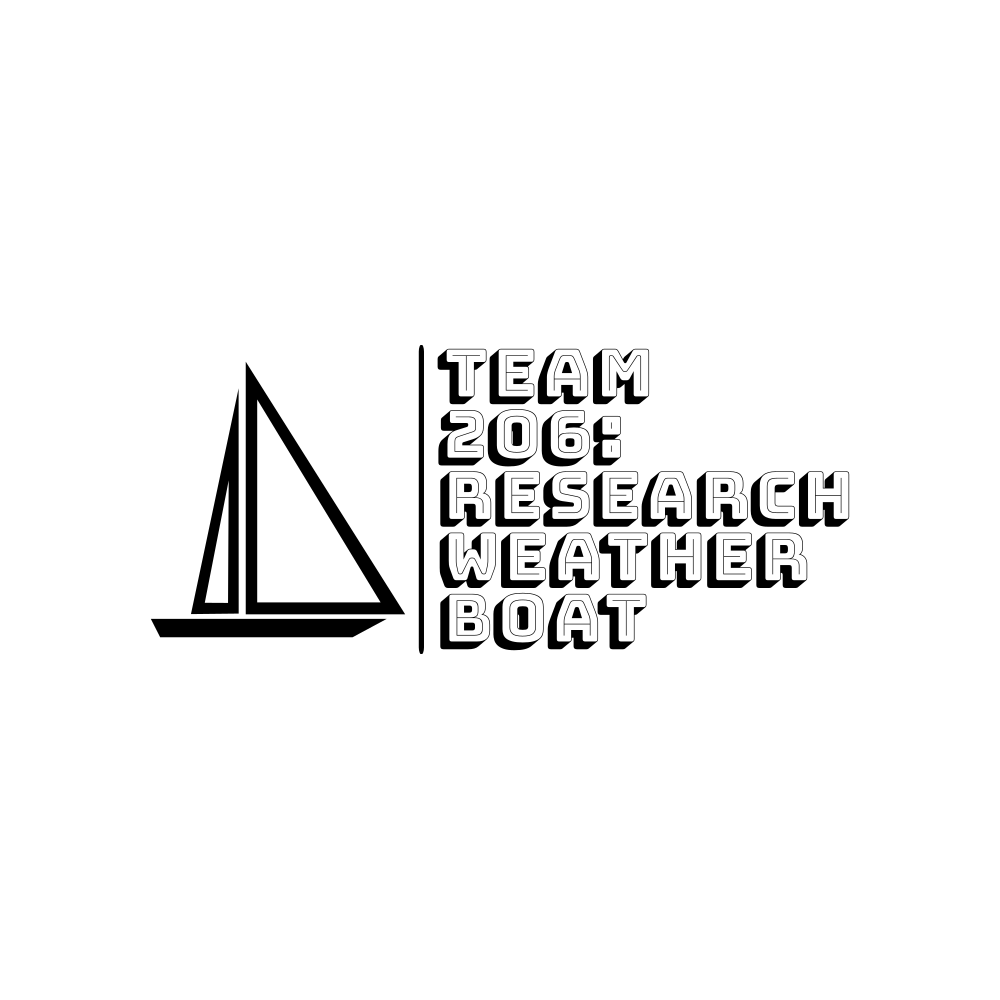
Team 206: Research Weather Boat
Students: Jacob Pisors, Claire Rogers, Gavin Benvenuto, Abigail Gordon
This group was tasked with designing a mobile weather station. Designing a PCB, 2 I2C sensors and an SPI motor, as well as programming our micro controller and Wi-Fi module were the main challenges. Their end solution is a research weather sailboat.

Team 207
Students: Daymon Wilkins, Hector Peralta, Stefano Greco, Ragde Chaira
This project measures the local temperature and wind speed in order to deploy a protective covering over a planter box to ensure that the plants inside are not harmed by environmental factors.

Team 208
Students: Miles Wilson, Kyle Selasky, Felicia Szleszinski, Mingqi Yu
The goal of this project is to create a therapy device for individuals with nerve damage in the hand. The team created a glove that senses the force being applied to an object and dynamically changes the resistance of bands attached to each finger. This will force the hand to grip with less pressure to avoid crushing the object being held. The glove also has a temperature sensor to sense anything that would burn the hand. Data is relayed visually through a few LEDs and wirelessly to an external server. The glove’s resistance-changing motor can also be controlled directly through a serial terminal.

Team 302: Hail Armory
Students: Tyler Winder, Sam Kohler, Jose Nava-Mesina, Tilak Raj Thanga Raj
Every year in the U.S., there are at least 10,000 storms that have hail big enough to damage solar panels. With the growth of solar panels, the risk of them getting damaged increases. This team’s goal is to solve that issue.

Team 303
Students: Zhengbin Chen, Abdulrizak Husein, Sivanee Naghichetty, Prem Kumar
This team’s mission is to design and construct a robotic device that can demonstrate simplicity, portability and precise detection of temperature and humidity. Our team is committed to developing a product that can be accessed by a mobile phone connected to WiFi, while also providing a motion capability that can be detected by moving into tight places.

Team 304
Students: Trent Packer, Cayman Preston, Brendon Salido, Levi Transtrum
This team’s goal is to design and manufacture a WiFi enabled weather-sensing device.

Team 305
Students: Tristan Dunton, Aaron Karsten, Mark Alvarez, Kevin Hays
Climate Sensing

Team 306
Students: Nathan Hoge, Dylan Turner, Samuel Striffler, Jedriq Ventura
This team is tasked with making a mobile weather station with at least two sensors, a switching regulator, and motor articulation dependent on sensor input. Success in this project will rely on member participation in the integration of the device and the overall device readiness of its subsystems. Success will also be measured through the creation of a robust, high-quality device with a straightforward and convenient operation for the end user.

Team 307
Students: Connor O’Hara, Samuel Masamitsu, Jadrian Padilla, Jacob Tangeman
This team was tasked with designing and building a mobile weather station. Students went about this by designing a small enclosed dome with sensors to read the temperature and humidity inside. When the humidity gets too low, an actuator will cause a squirt bottle to spray water.
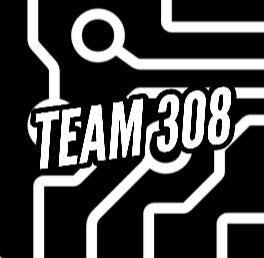
Team 308
Students: Andrew Sarrasin, Jeff Davis, Lina Mayyas, Marla Hawthorne
This project entails the design of a mobile weather station. This includes two sensors connected to a micro controller that allows for motor output. The goal is to demonstrate a digital output to an external device with data from internal sensors.

Team SF-Echo
Students: Fatema Alshehhi, Salsabil Soliman
This team designed a solar panel with an instant cleaner that senses the temperature and cleans the panel based on the data.
Fall 2022 projects

Team 102: Visual Helmet
Students: Ali Aldaaysi, Gil Ruiz, Matthew Tucker, Daymon Wilkins
The purpose of this project is to create a helmet that provides a combination of assistive technologies for those who are visually impaired. The device they designed allows users to have awareness of an object approaching them and the distance and speed at which it is approaching.
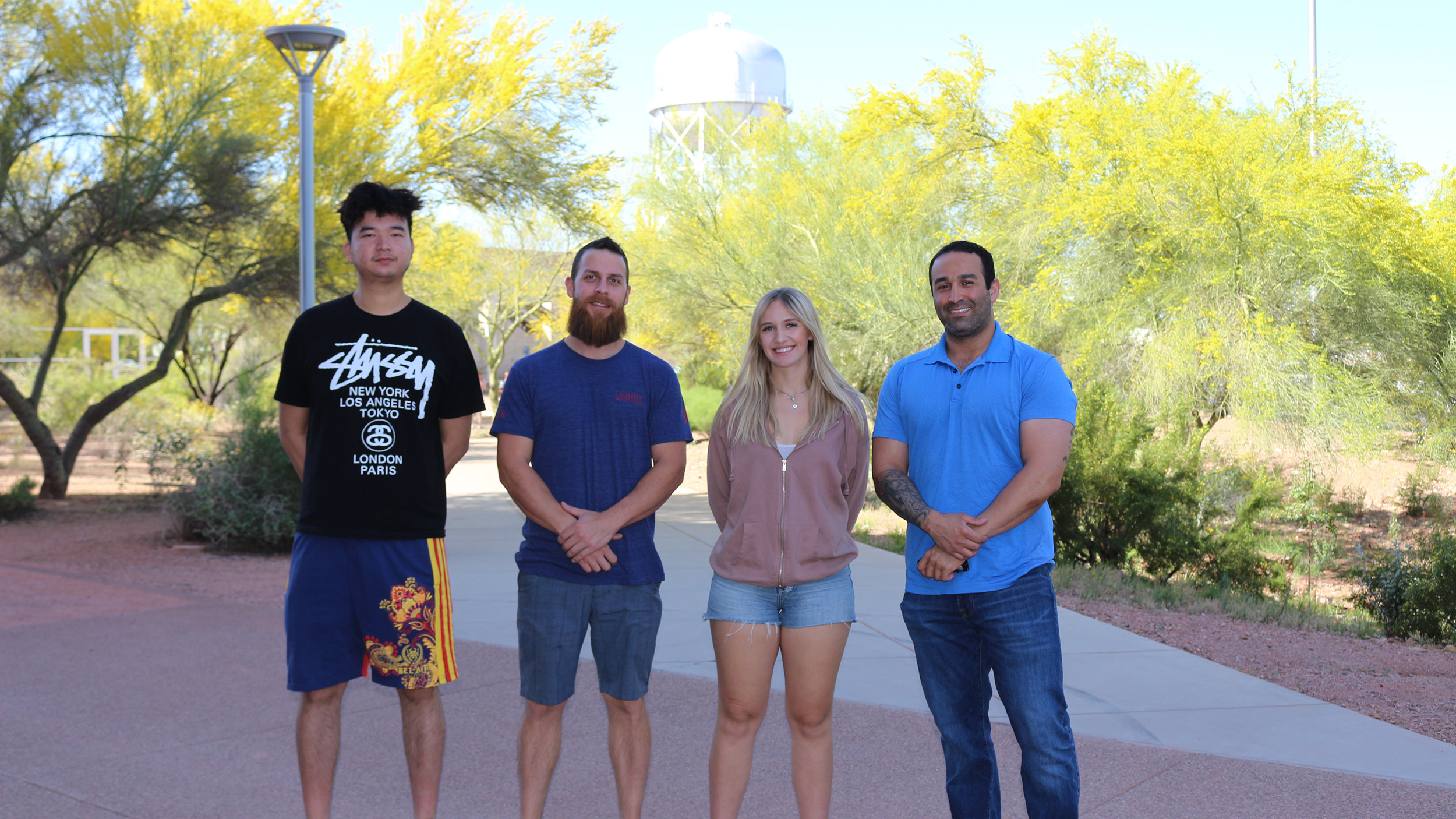
Team 103: The Predator
Students: Michael Femiani, Haylee Mastoris, Juan Ramirez, Kaijie Wang
The Predator is a modular shoulder mount that will measure distances and GPS coordinates and display them on an LCD screen. The purpose of the project is to give industry workers, such as surveyors, a wearable and user friendly device to measure distances and store the data for future reference.
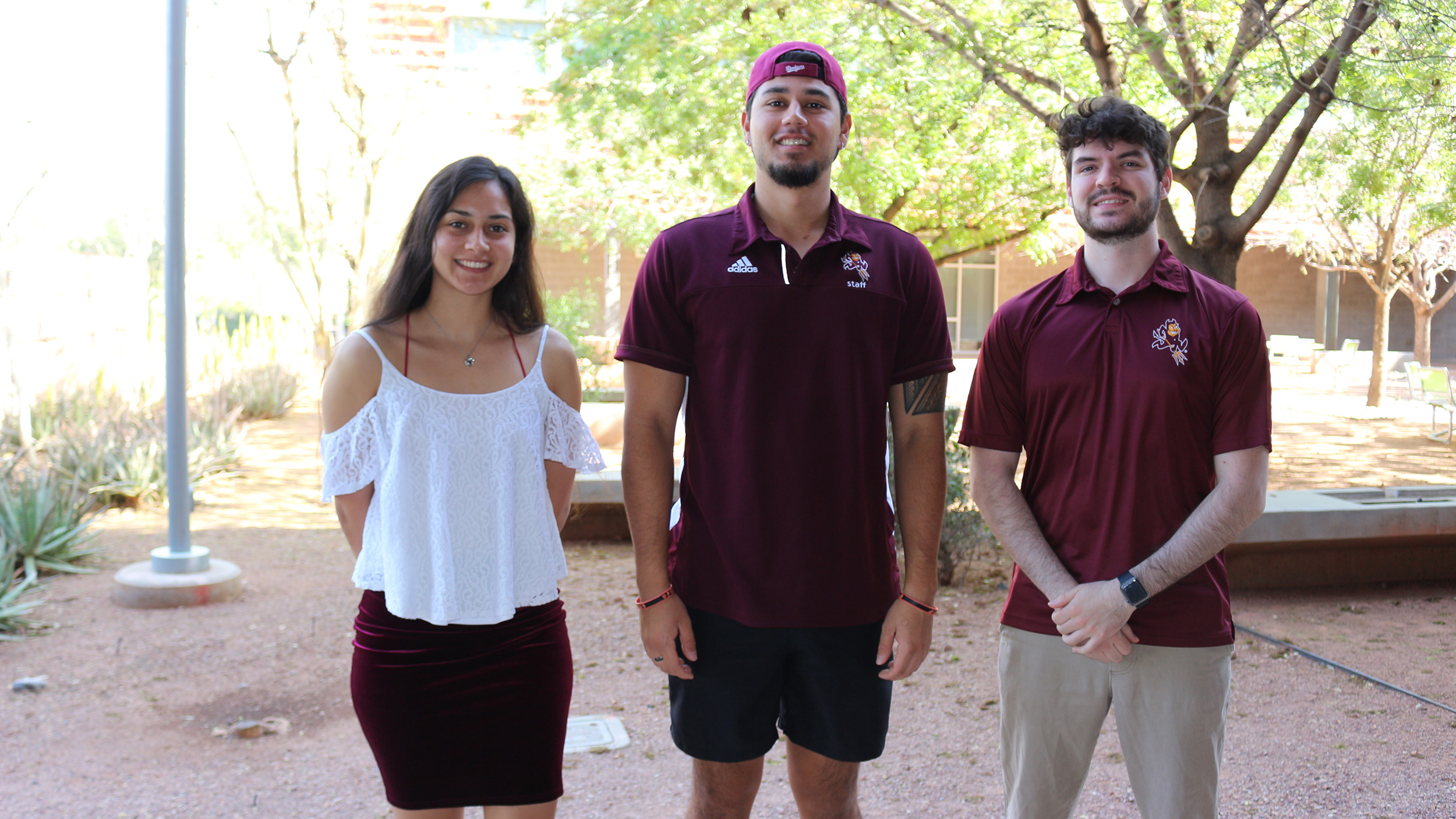
Team 104: K-9 Tac-Tech Vest
Students: Anthony Baldacci, Adriana Juarez-Lara, Tanner Souza, Dominick Vallelonga
This project aims to enhance police K-9 unit vests with technology that will elevate the unit’s ability to execute on the line of duty. The K-9 TacTech Vest is equipped with temperature sensing, GPS tracking, LED lighting and WiFi-controlled sound commands. The WiFi commands will come from a phone app controlled by the K-9 officer, allowing them to communicate sound commands at different pitches to the K-9.
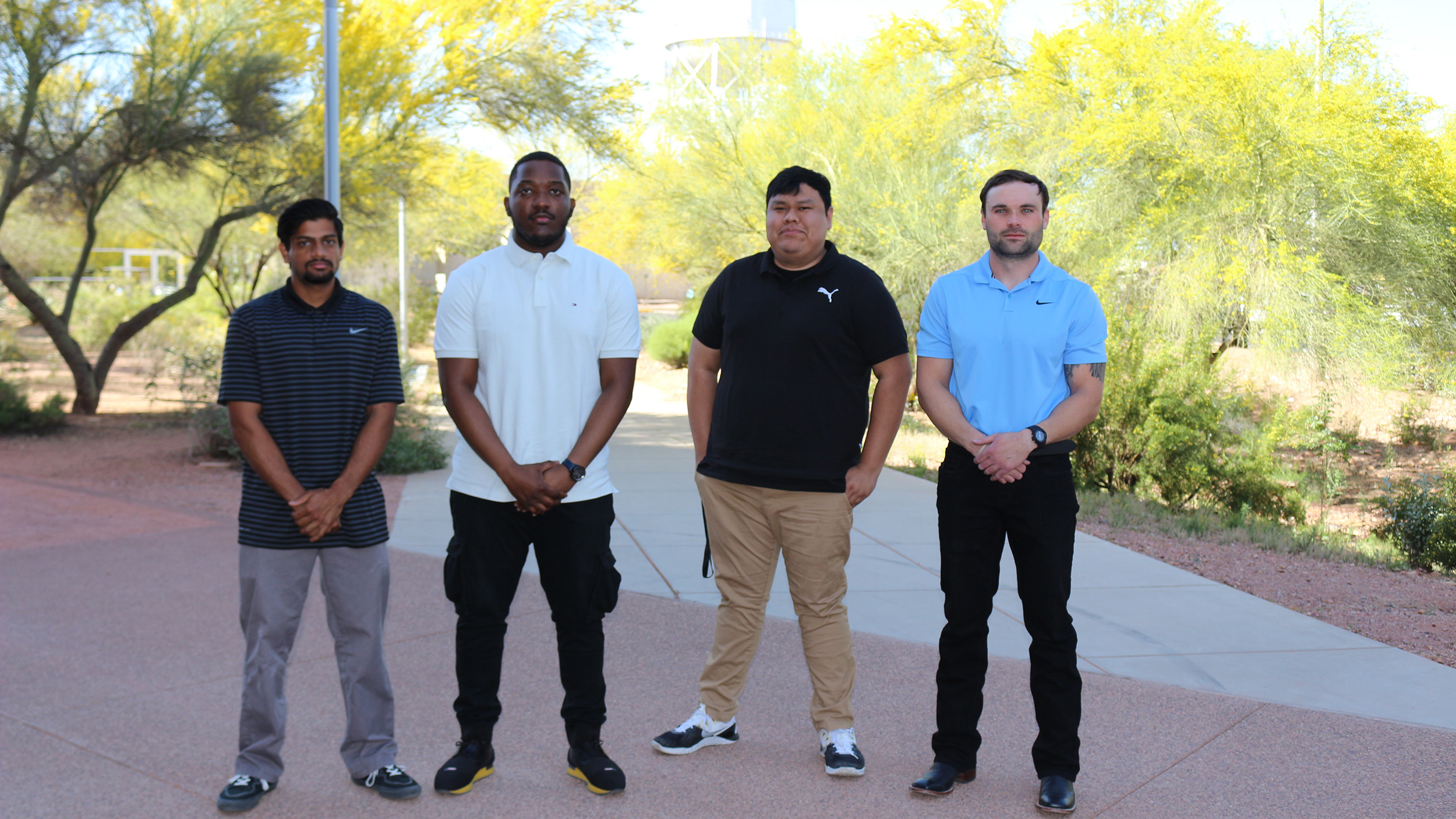
Team 105: Smartpack
Students: Isaiah Begay, Vanderson Cunjuca, Milan Patel, Logan Spearin
The function of the Smartpack is to enable a means of communication for a user with aphasia/dysphasia in today’s Covid era. The Smartpack is mounted to the users back in an active state and a complement of infrared proximity sensors will trigger to the user, via a vibration motor, whether a person is within a six-foot radius of the user’s backside. In addition to the trigger, the user can display, via conductive pads mounted to the strap of the Smartpack, a variety of predefined messages on an LCD (i.e., respect social distancing protocol) to the person within the user’s space.
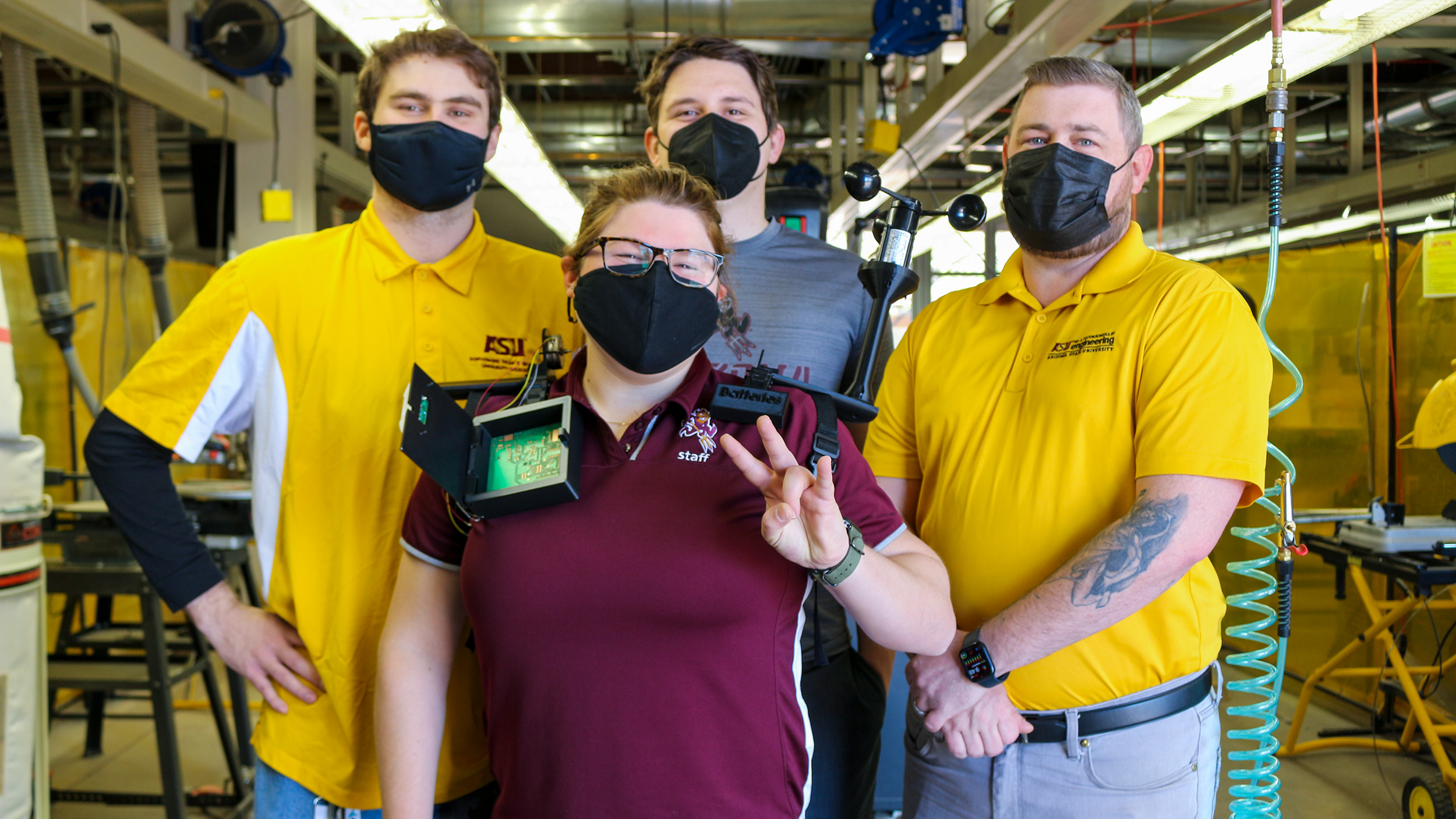
Team 106: The AutoHood
Students: Aaron Clatone, Sage Furman, Tyler Hulson, Michael Reynolds
The project is aimed towards individuals who seek a low-cost mechatronic solution to unpredictable rainy weather conditions. The AutoHood is designed to solve this problem by providing shelter in the form of a hood in the event of rainfall and cold weather. The device will include various sensors to predict rainfall allowing the device to warn the user in the form of a phone notification and deploy the device.
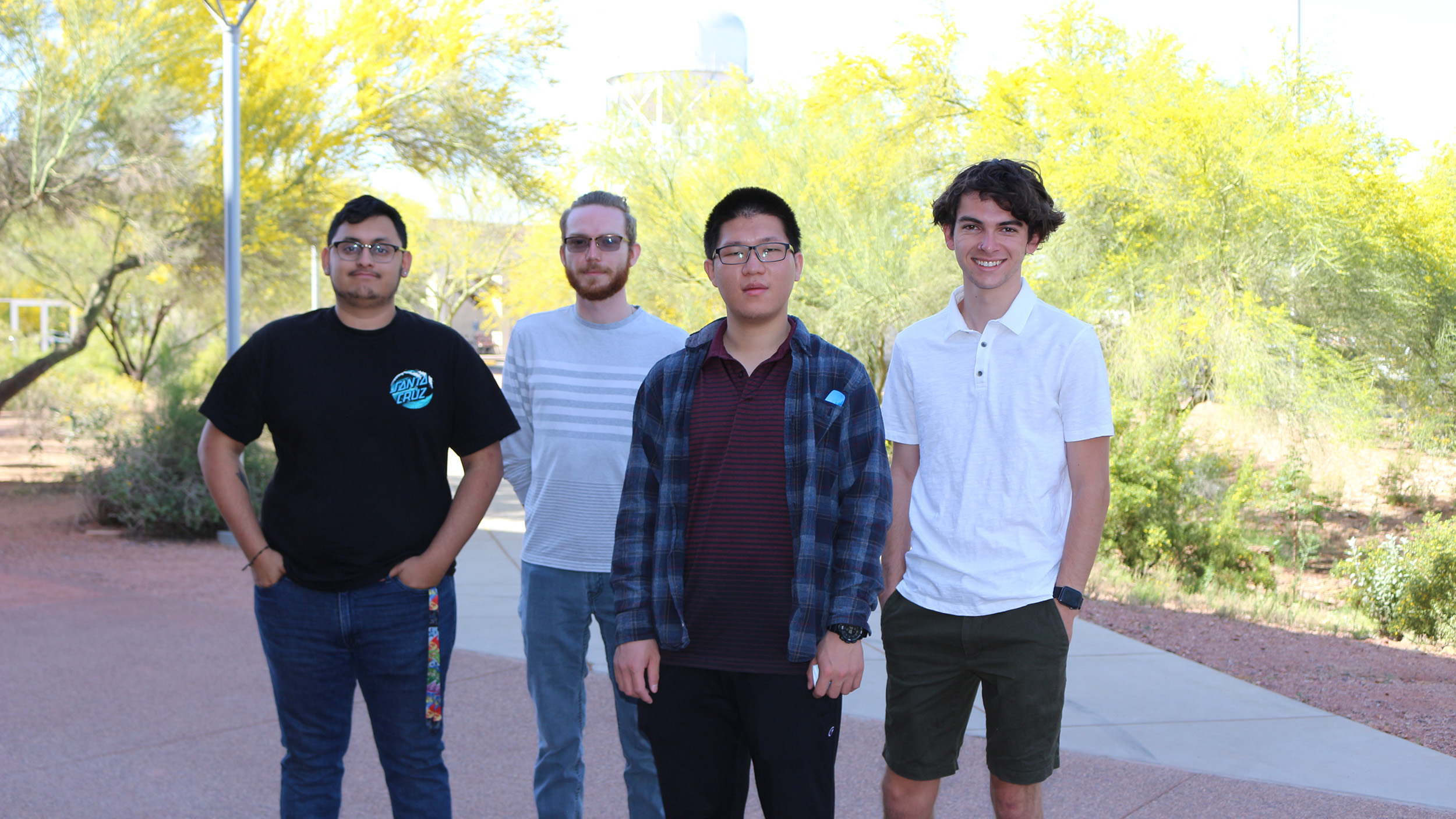
Team 107: Smart Gloves
Students: Noah Asherbranner, Austin Corona, Xianyao Liu, Niglan Quevedo
This team designed wearable technology in the form of gloves to help individuals who are more susceptible to Covid-19 or other illnesses, to help maintain health precautions. It can help those who may not be able to communicate verbally, or those who would like to visually send a message to others. This will be achieved by using an LCD screen to display messages based on the ultrasonic or pressure sensors and user input.
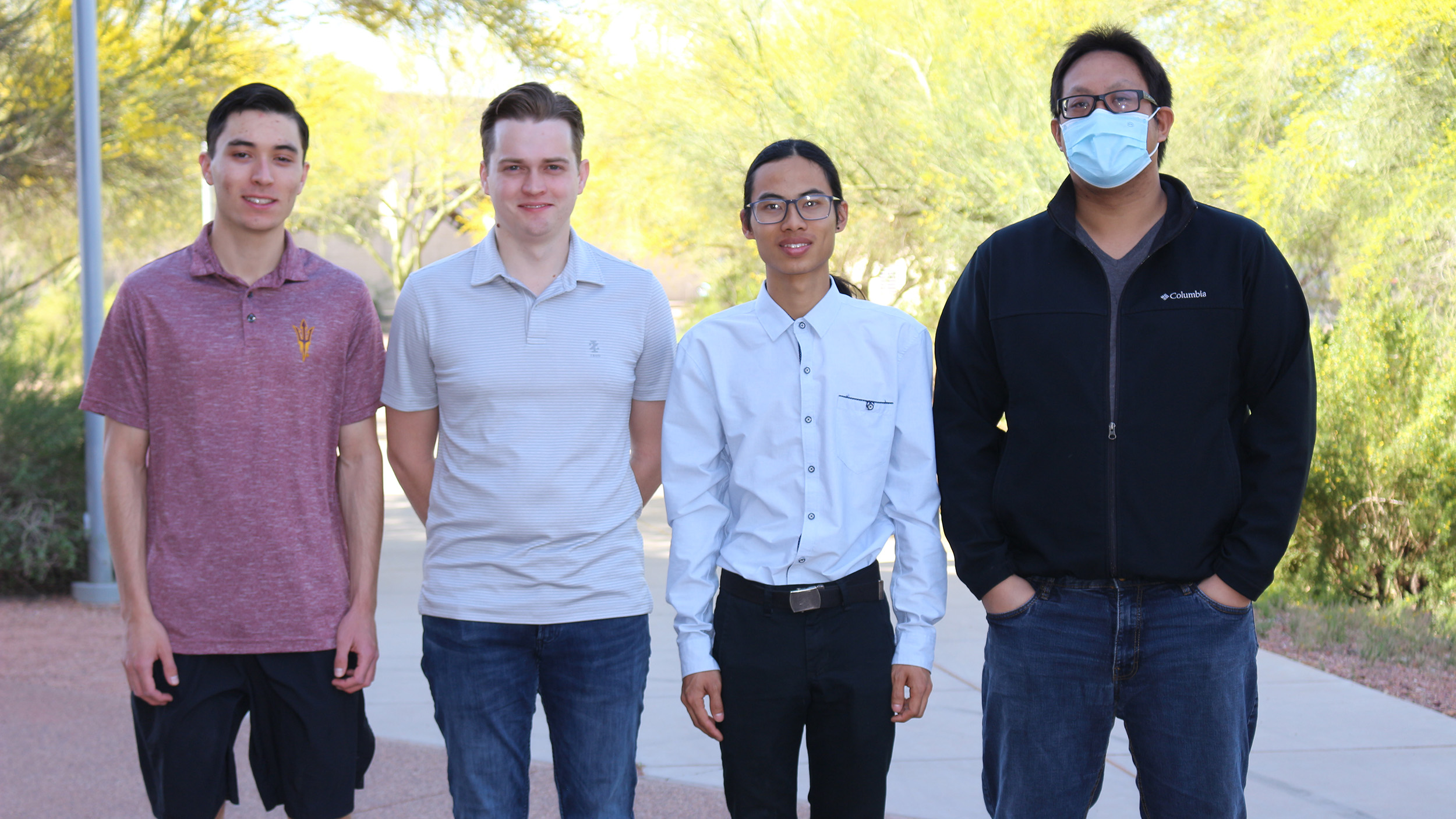
Team 108: Helmet Buddy
Students: Kenneth Cunningham, Nicholas Knowles, Alec Tran, Benjamin Yee
The Helmet Buddy is a smart add-on device meant for existing bicycle helmets to improve rider safety. It will enhance the safety of cyclists by increasing their awareness to surrounding motorists to decrease the frequency of accidents. This add-on device will include the following features: A smart LED headlight that automatically adjusts its brightness according to the brightness of the surrounding environment to improve visibility, an automatic brake light that turns on and flashes when the cyclist decelerates, turn signals to help others predict the cyclist’s path and a fall detection precept that will send an alert message if the cyclist has fallen and is not responsive.
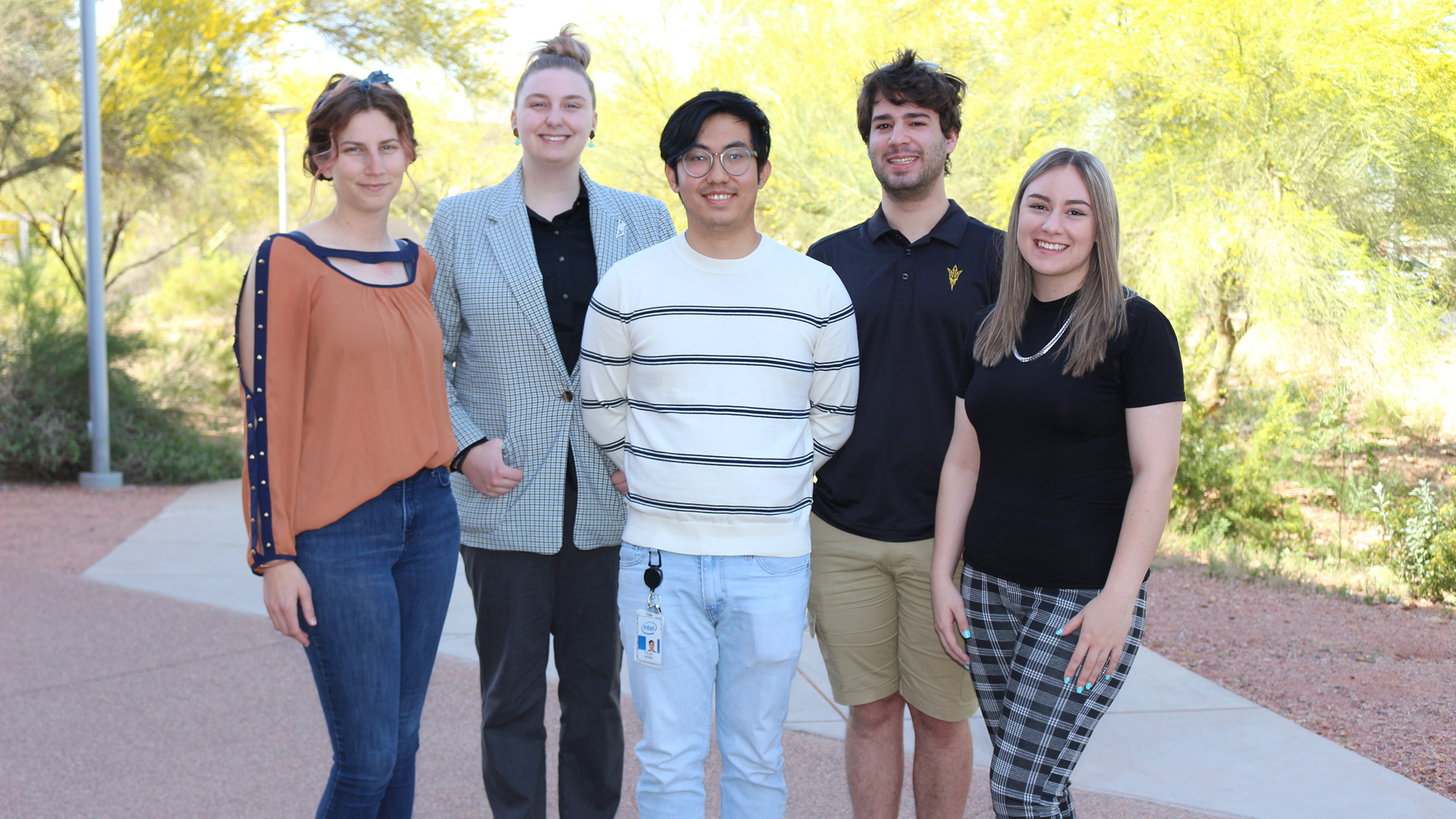
Team 109: Fur-ever Safe
Students: Alexys Antell, Hannah Brown, Elizabeth Evans, Zachary Goode, Yujia Wang
The premise of this project is to design and create a plant system that will be able to provide red, green or blue light to a plant, detect the water level, display the plant’s information for the user via a LCD screen and protect the plant from animals and pets using a spray bottle. This will put the plant parents’ mind at ease when it comes to the health and safety of their plant.
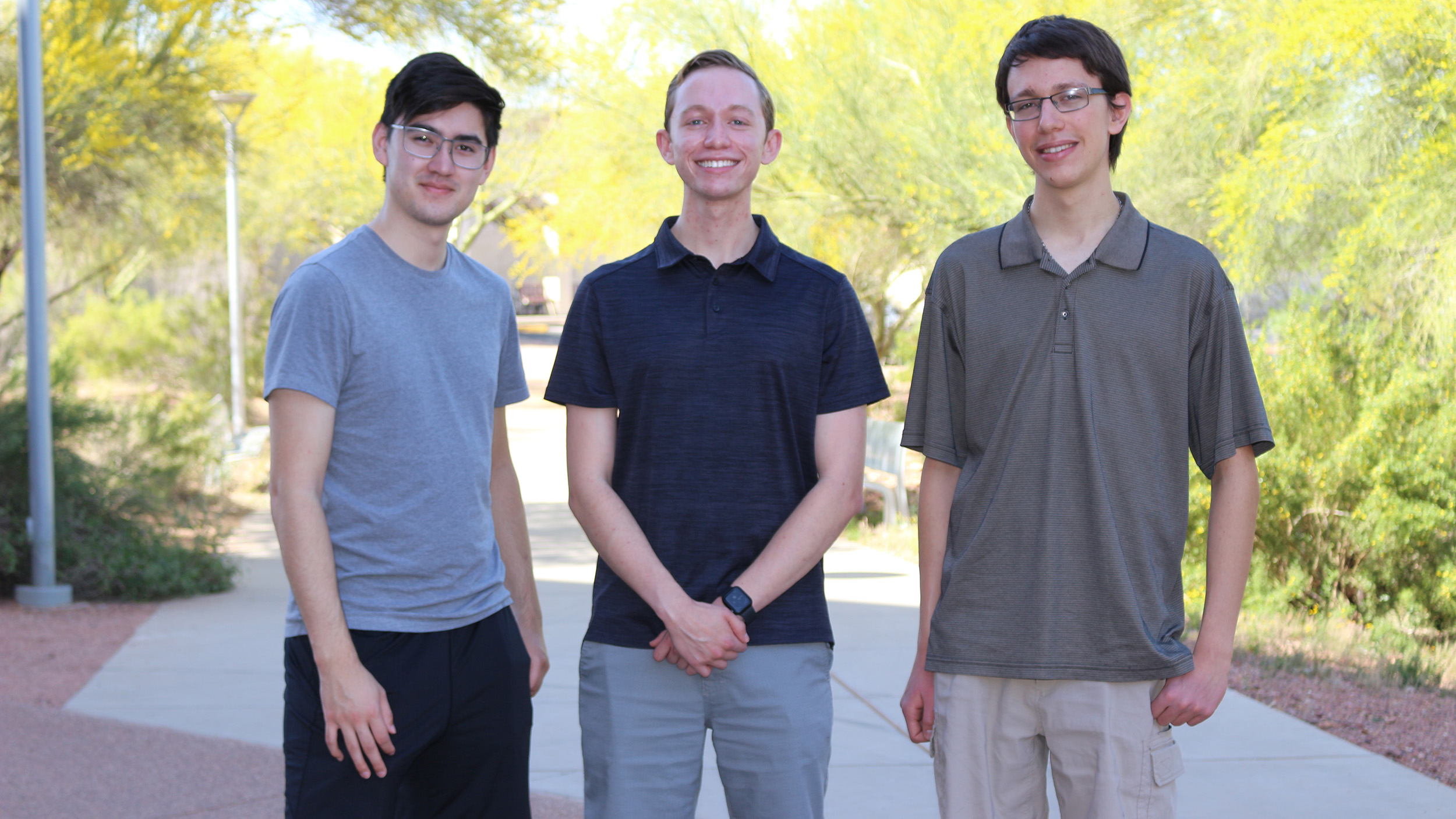
Team 110: Adaptable Smart Helmet
Students: Ryan Clark, Kenneth Hodson, Alexander Potts
The Adaptable Smart Helmet is a head-mounted data logger that can fit underneath a variety of different helmets. It is intended for use primarily by bikers or skydivers. The device collects information about the movement of the user and displays it on a heads-up display. It can use the information gathered from its three-axis accelerometer to show the user’s acceleration and average speed, and can send out a distress call to contacts if high acceleration is detected (such as a fall or impact). Data collected from the device is also sent over WiFi to a phone or computer, to be stored for later use.
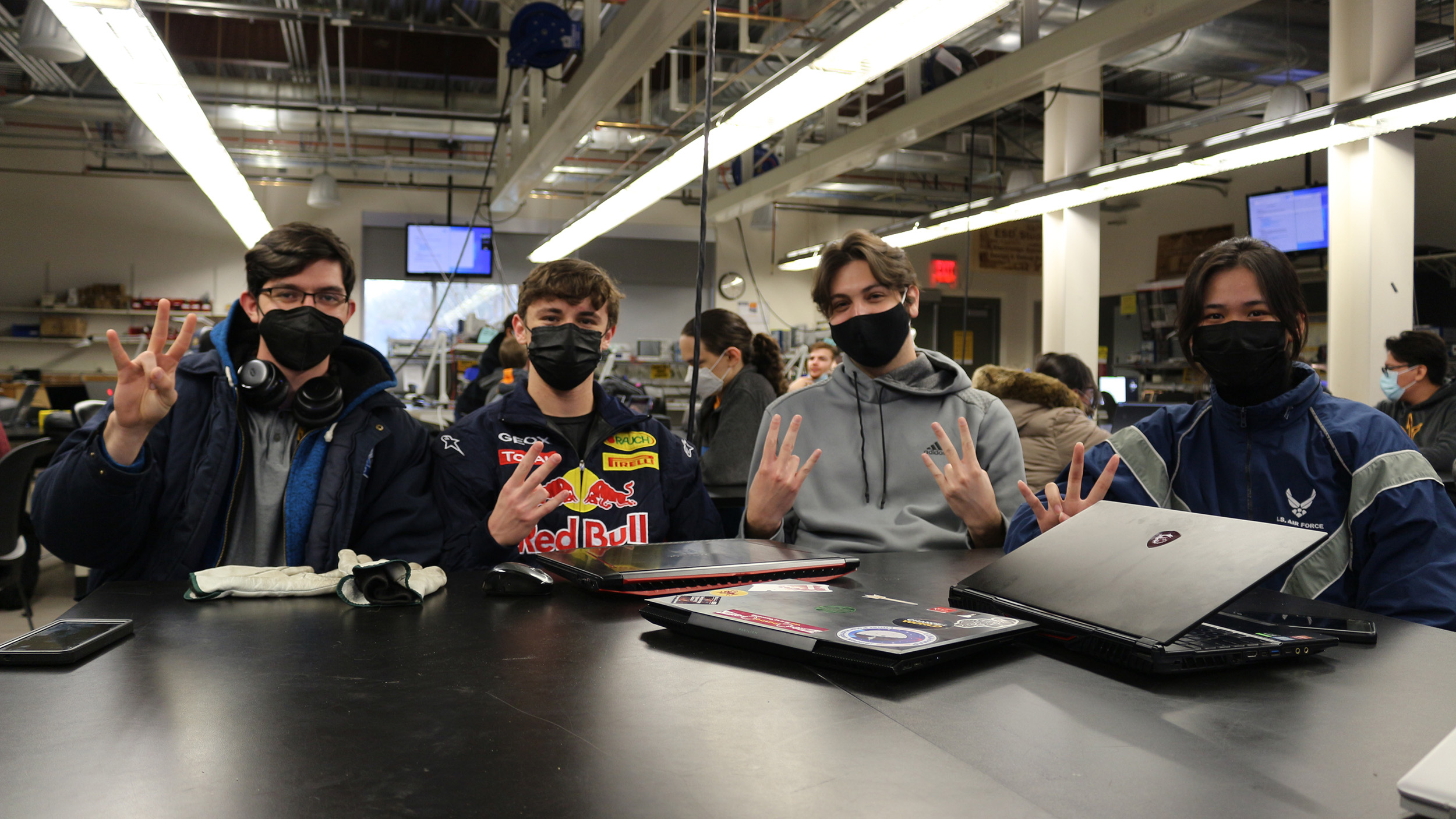
Team 201: Project Bee
Students: Daniel Espinoza Pena, Nicholas Johnson, Logan Suffredini, Xiaoyan Lin
This project aims to create a wearable technology for those involved in combat sports. It includes a sensor that attaches to the user’s glove and give them data based on a workout or fight. Data gathered can include a punch count, punch force and punch speed. The data can be sent to the user’s phone using WiFi so that the user can track their data to show possible areas of improvement.
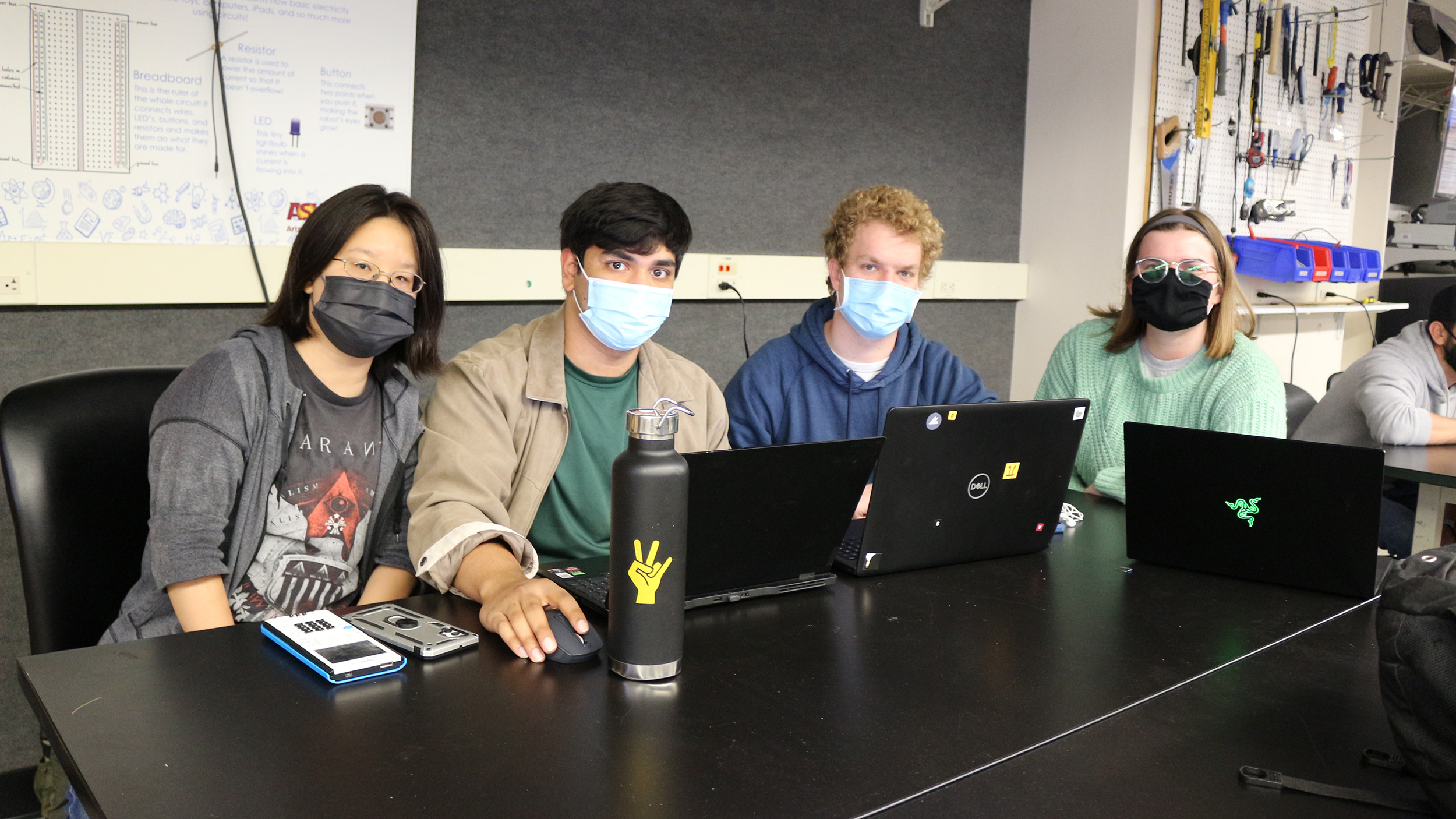
Team: 202: Plant Sweater
Students: Matthew DSouza, Anita Lu, Ian Mansfield, Madelyn Molnar
This team created a wearable technology for a person, animal, or plant. The plant sweater is a robotic cover for plants that can deploy when night falls and it gets cold. This will help plant enthusiasts protect their plants from the cold so that they can enjoy them for longer periods of time without manually having to put plant covers on their plants. This automated protection will be achieved through the use of both a temperature and daylight sensor that monitor conditions around the plant, and a motor that deploys the cover when the sensors indicate that outside conditions are no longer favorable for the plant.
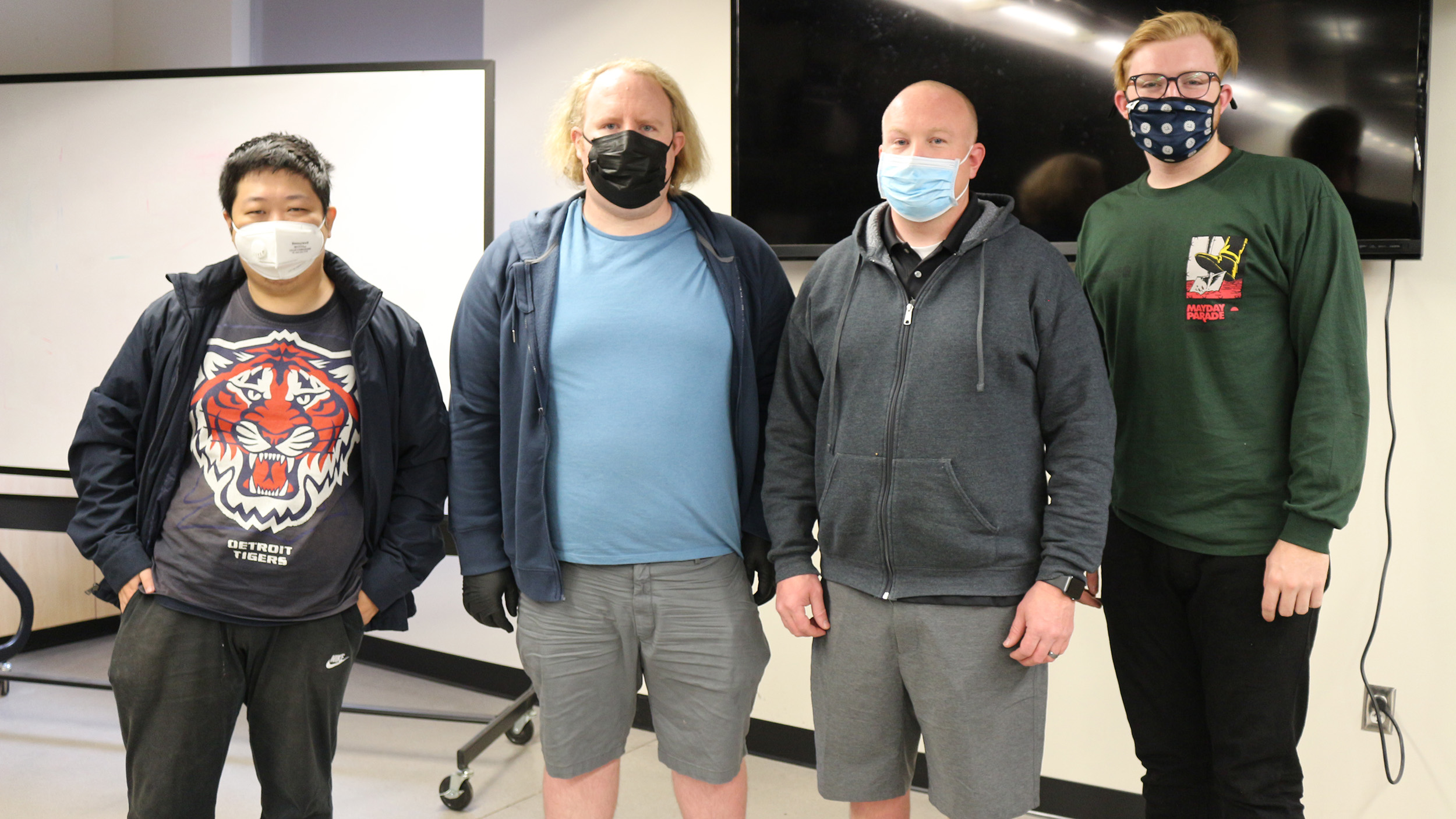
Team 203: Standing Straight Machine
Students: Jiaji Chen, Christopher Friend, Brian Kenney, Braden Williams
The purpose of this product is to assist those with poor posture in the seated position by providing gentle reminders to correct their position. The product will have a built in pressure sensor that will detect when the user is not properly positioned in their chair. This will work in coordination with a temperature sensor that will be monitoring temperature between them and the back of their chair. When the device senses an incorrect posture it will activate the built-in motor. The motor will move in the forward position when the user needs to sit up straight, and move in reverse after they have sustained improved posture.
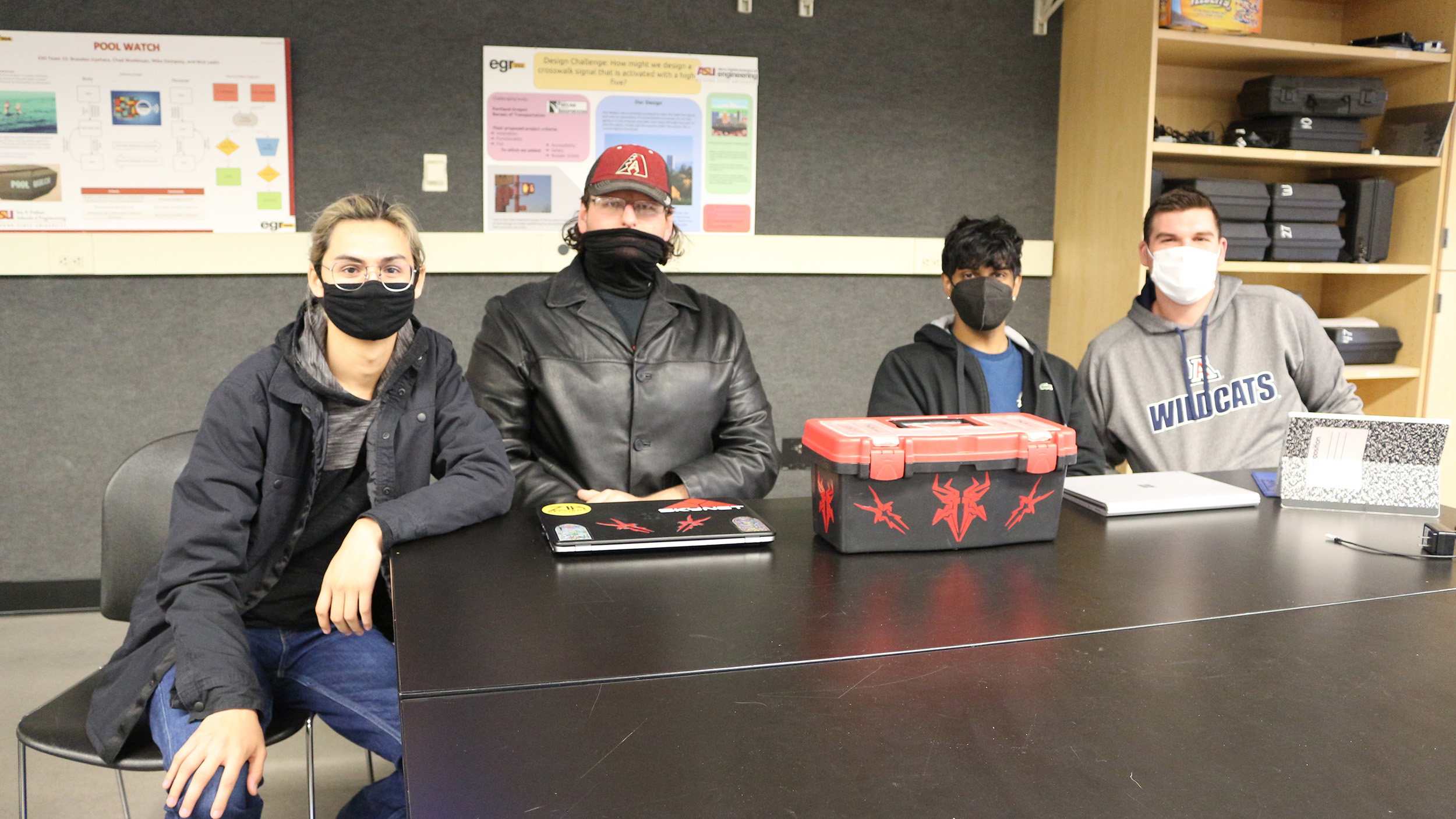
Team 204: Gyroscopic 3D Arm
Students: Erik Alegria, Nicholas Dunn, Dalton Tebbs, Aahan Venkatesh
The purpose of this project is to create a robotic third arm to help the human body not only carry, but stabilize an object so that the wearer has free hands. The project will have a total of three motors that will move with given data from a gyroscopic sensor. The motors will rotate on the X, Y and Z axis giving the device a full range of motion.
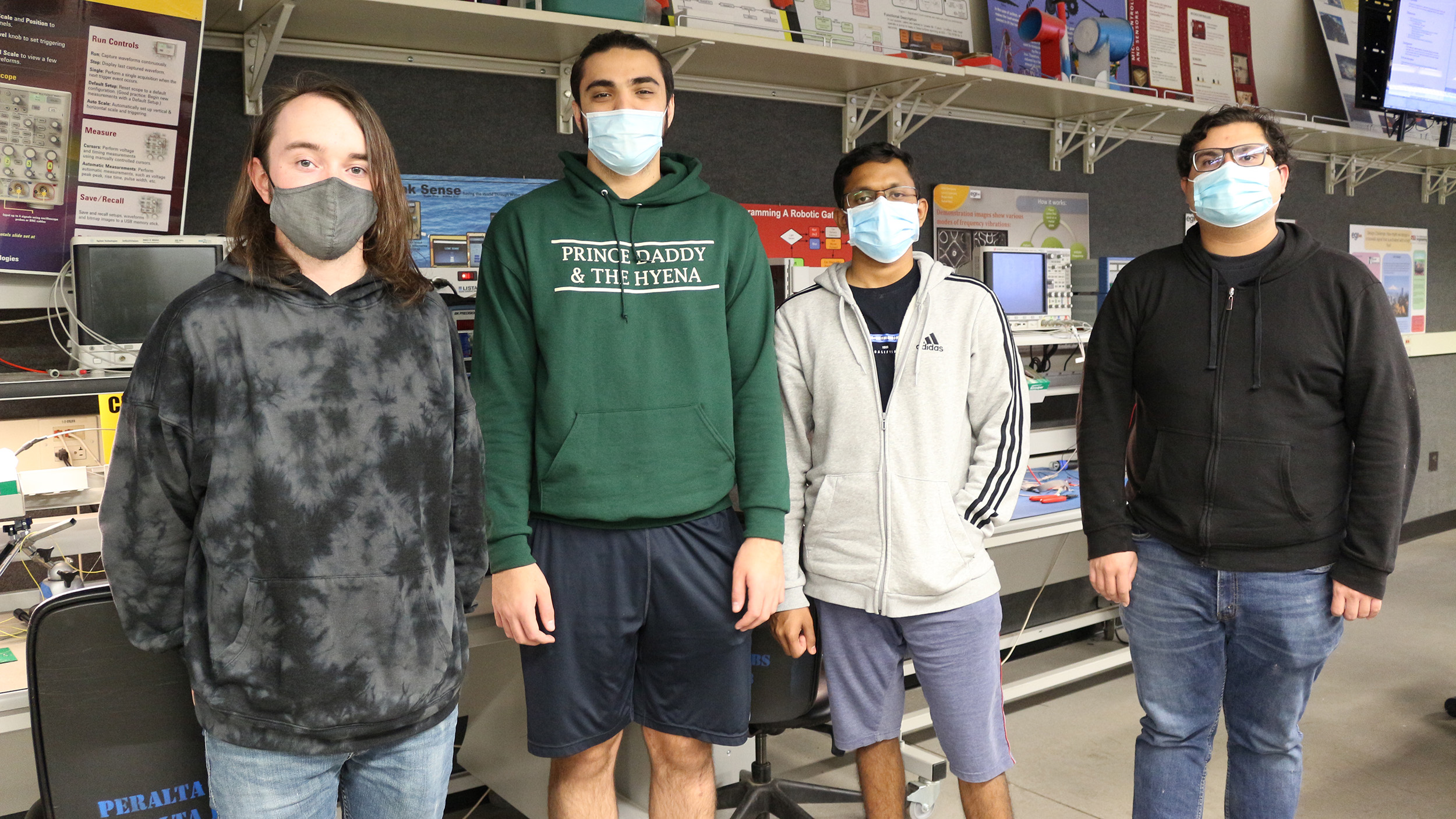
Team 205: Watching Distance
Students: Noah Blevins, Jose Diaz, Sai Srinivas Tatwik Meesala, Samir Strasser
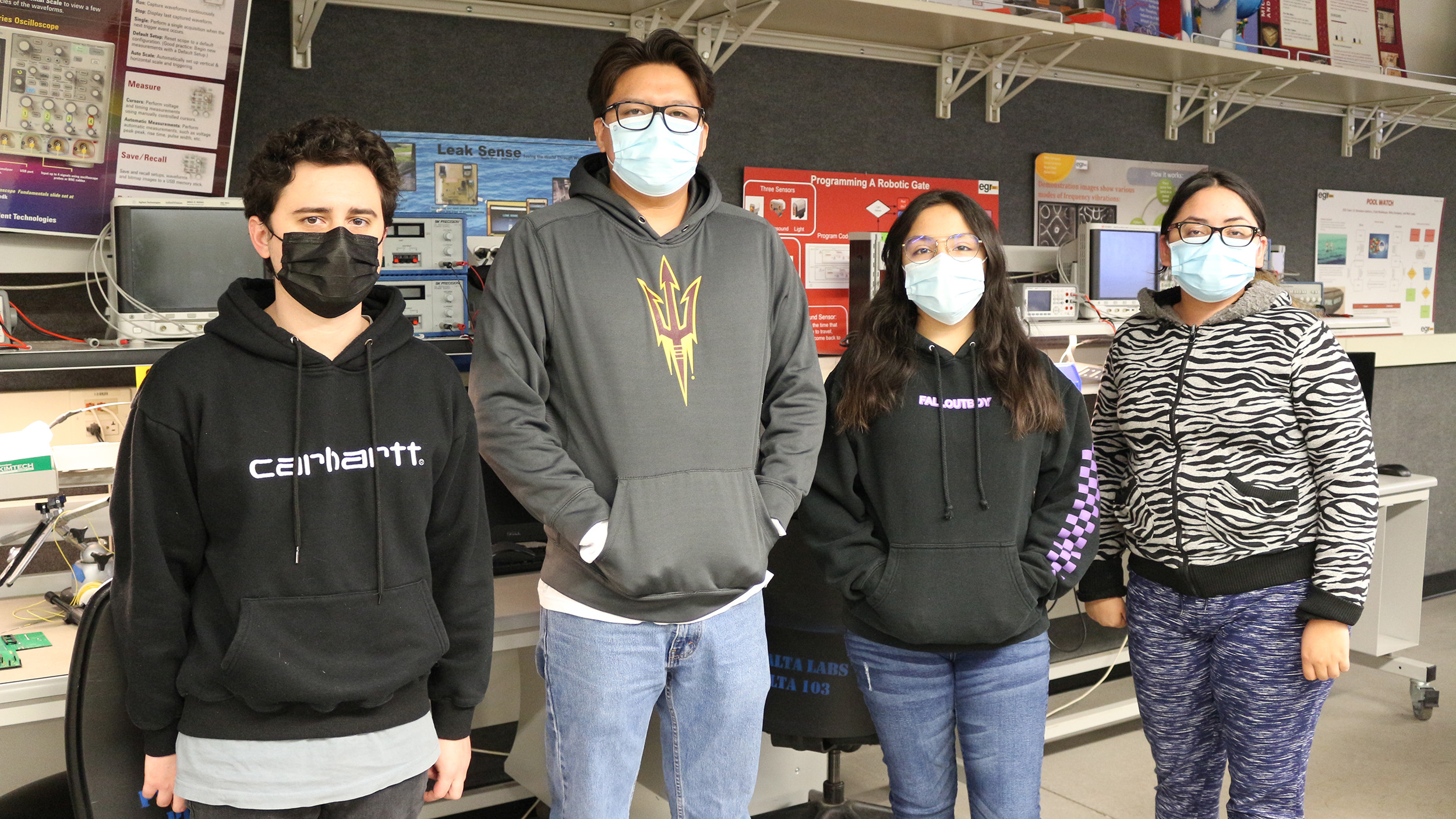
Team 206: Trackpack
Students: Paulina Garibay Jaquez, Justin Little-Sagg, Jacqueline Villanueva Castro, James Zaverdas
The purpose of this project is to create a trackable backpack that has a temperature sensor to measure the ambient temperature as well as eight LED lights on top of the device to be used for communication for the wearer. The backpack can be used by children for their walks to school, or those attending an amusement park. Hikers, campers and even mountain bikers can use the Trackpack as a way for friends or family to locate them while on their trip. The LED’s are for communicating with the wearer. If the child has wondered from their parents, their parents can signal the LED’s notifying the child to return to the parents.
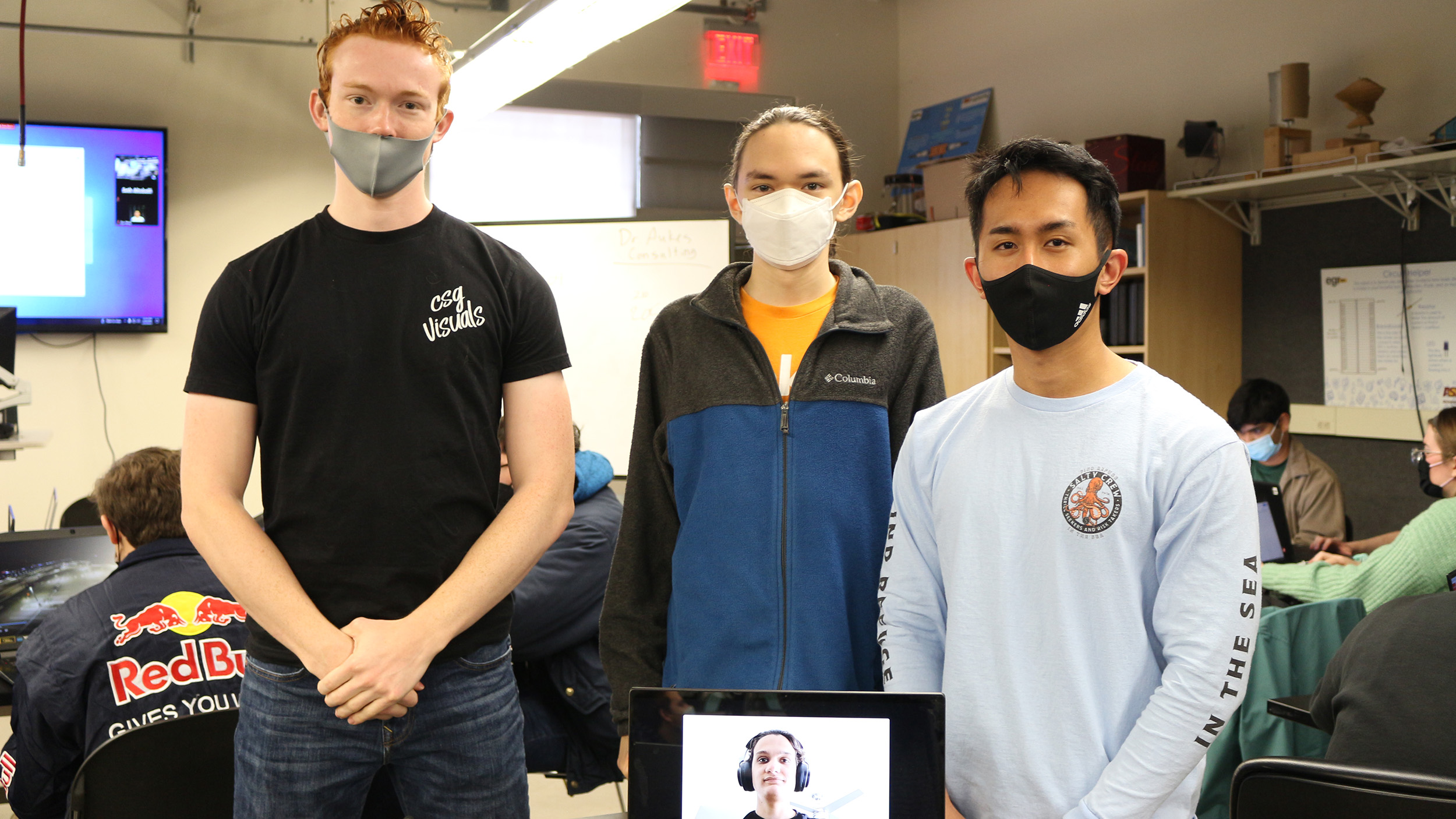
Team 207: Mountaineer’s Lifeline
Students: Seth Altobelli, Max Gao, Reagan Gillespie, Danis Nugroho
Mountaineer’s lifeline is a wearable vital monitoring device that can track the physiological status of a high-altitude athlete to optimize their performance while keeping them safe from dangerous situations such as altitude sickness aor extended durations of high heart rates. Mountaineer’s lifeline uses photoplethysmography to measure the users heart rate along with an altimeter to track the users altitude. The data from these sensors is used to alert the user when they are in danger. This simplistic set of sensors results in the maximum battery life at a minimum cost while retaining the desired core functionality of the device.
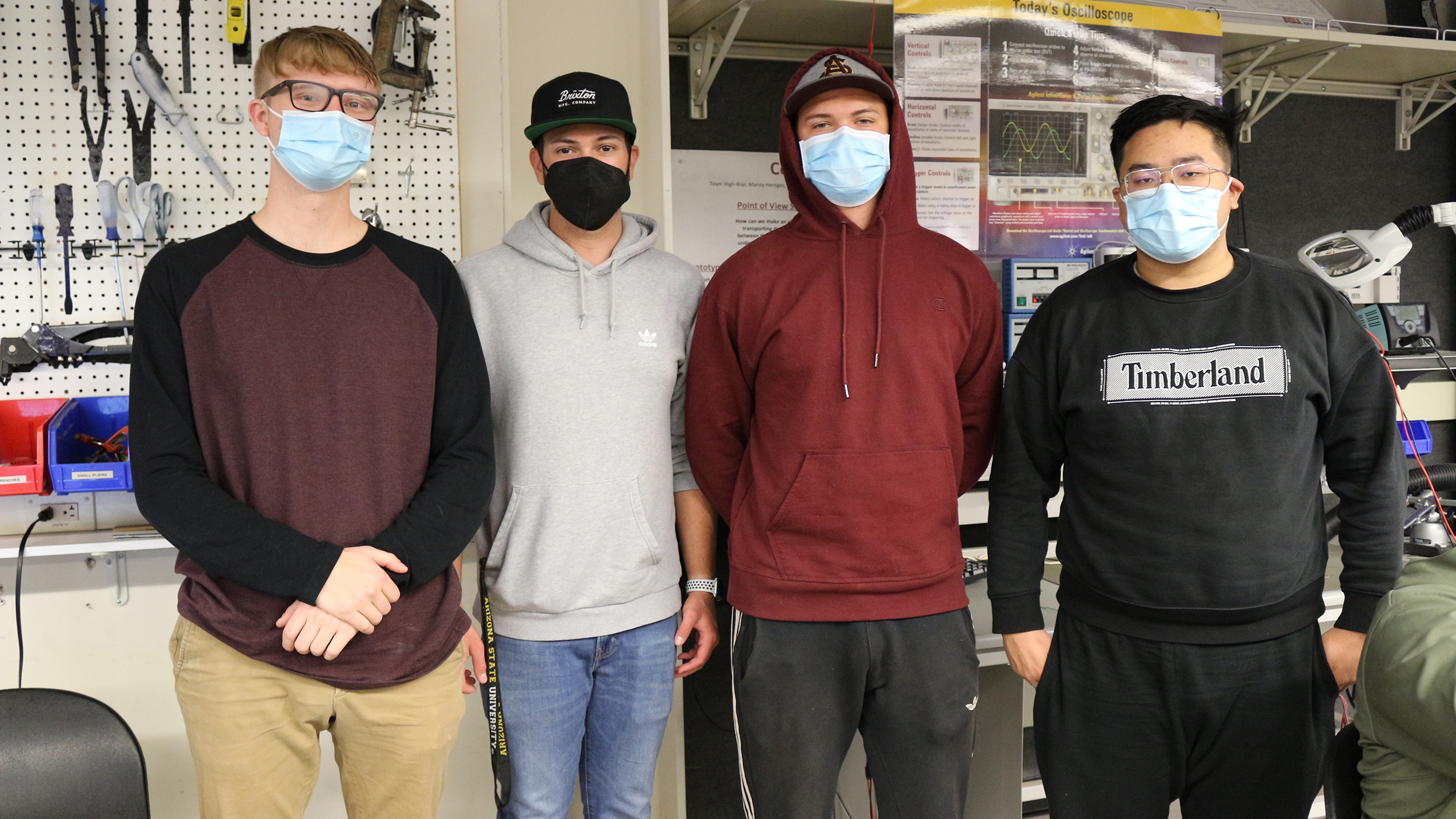
Team 208: Haptic Partner Bracelets
Students: Connor Holley, Garrett Kolowitz, Preston Miller, Zhanyi Wang
The Haptic Partner Bracelet project poses a solution to the lack of physical touch often experienced by people in long distance relationships. The pair of bracelets will be able to sense an analog force input from the user, transmit that input via the user’s cellphone and simulate the force on the partner’s corresponding bracelet using a vibration response. The vibration force felt by the receiving user will be proportional to the force exerted by the sending user. Although the target market is for individuals in long distance relationships, the product would likely be well-received by any couple, as feeling your partner’s presence when they are away may be a comforting sensation.
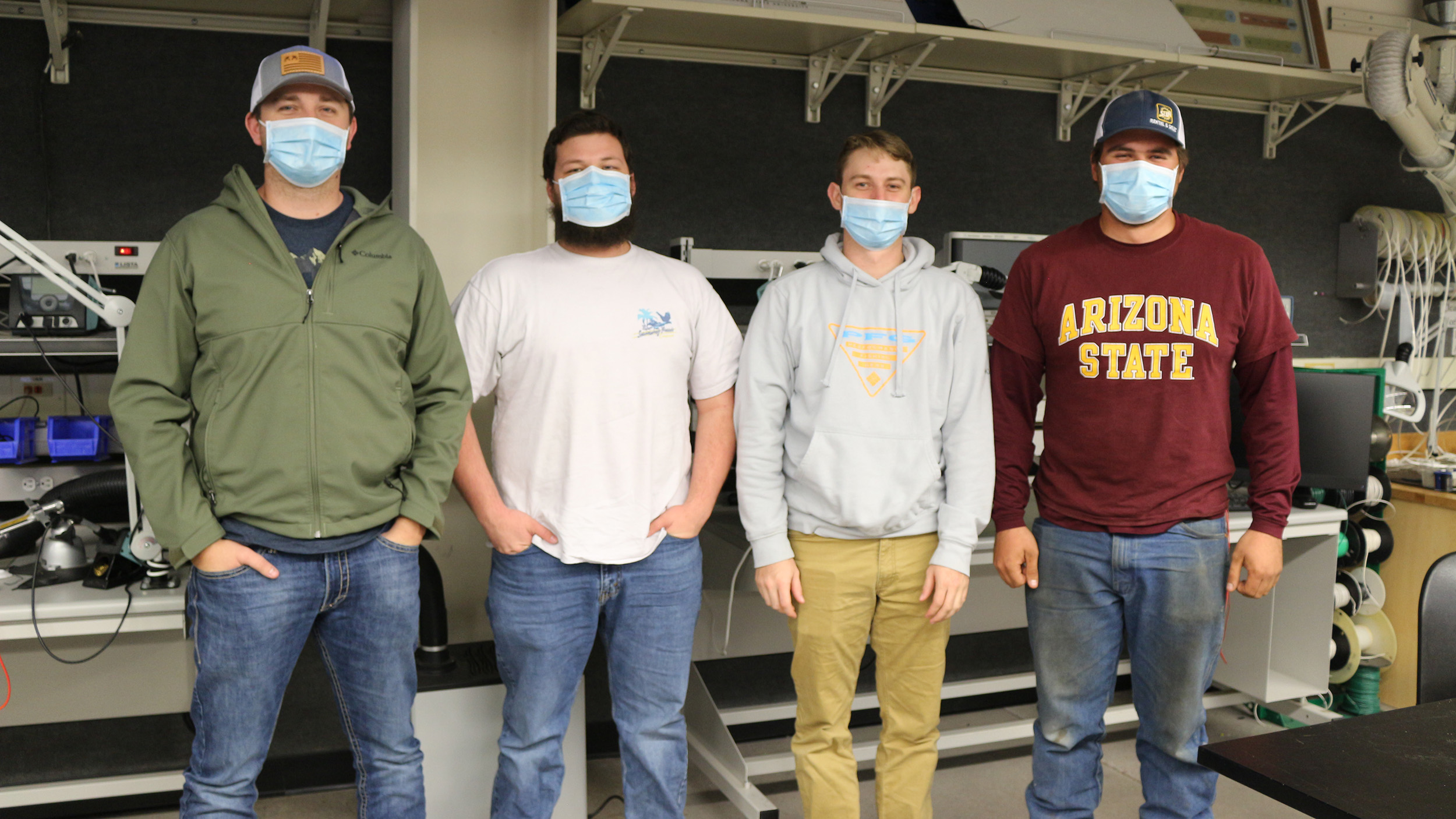
Team 209: At Home Plant Irrigation System
Students: William Davidian, Justin Hancock, Zane Reynolds, Caden Wyatt
With life as busy as it is, one task that often is forgotten is that of watering in-home plants. This project will design and build a mini irrigation system that will water the plant based on a timer. The user interface will include notifications sent to the users phone to let them know to add water to the fill system, as well as temperature messages alerting the user to extreme temperatures. The user interface will also include different settings that can be established via the phone to change the watering times and amounts. The product will remotely keep plant life alive and well.
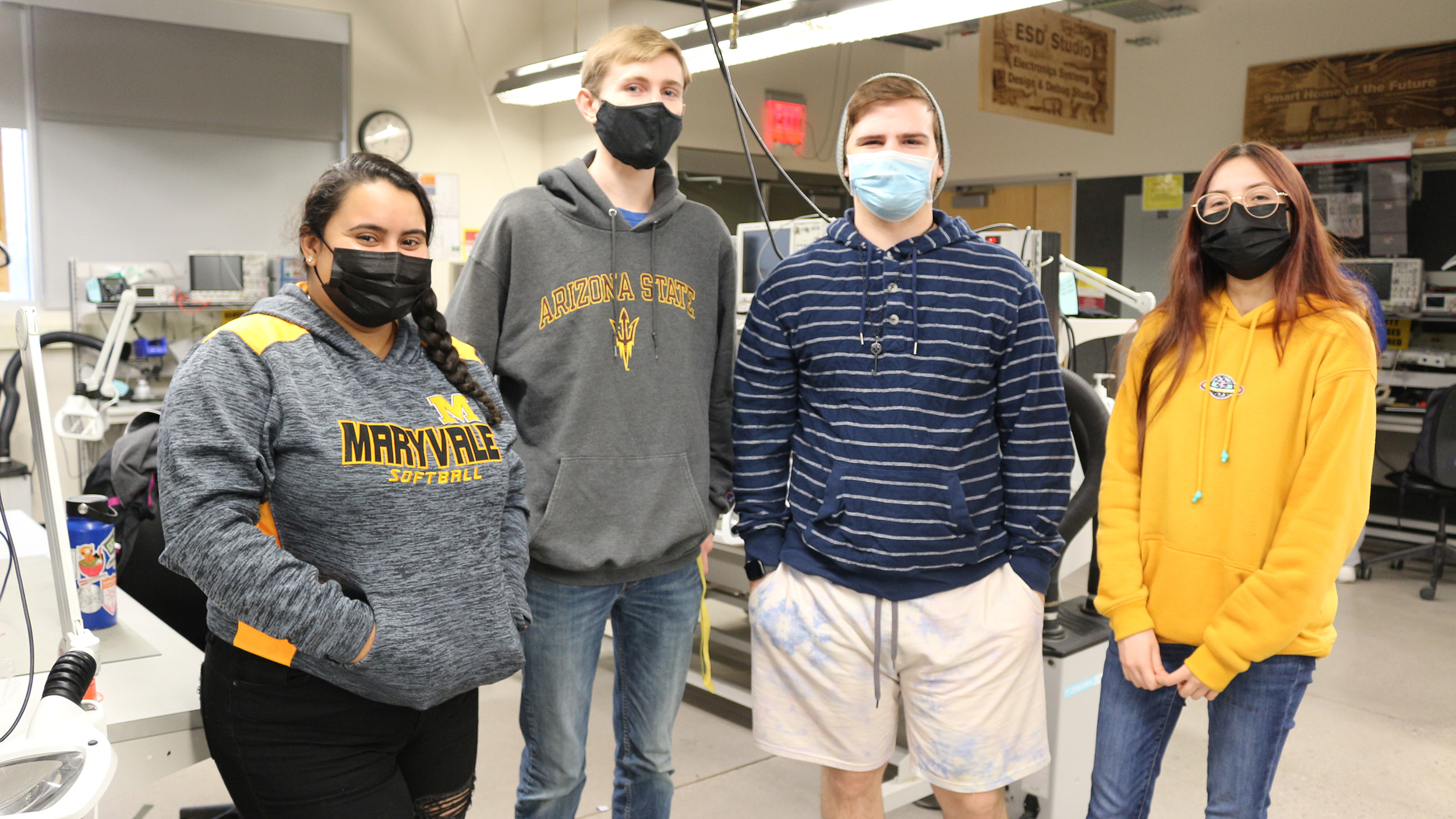
Team 210: Robotic Mask
Students: Jeiny Ayala, Nicholas CollinsYarnall, Litzi Matancillas, Bryce Taylor
The pandemic that the world faces today has posed many problems for many people. The most obvious of these problems is the health and safety of ourselves and those around us. This device is a wearable face shield that will display the user’s body temperature. Using a button on the user’s smartphone device they will be able to turn on an LED display showing their body temperature and allowing others to view it without coming within six feet of that person.